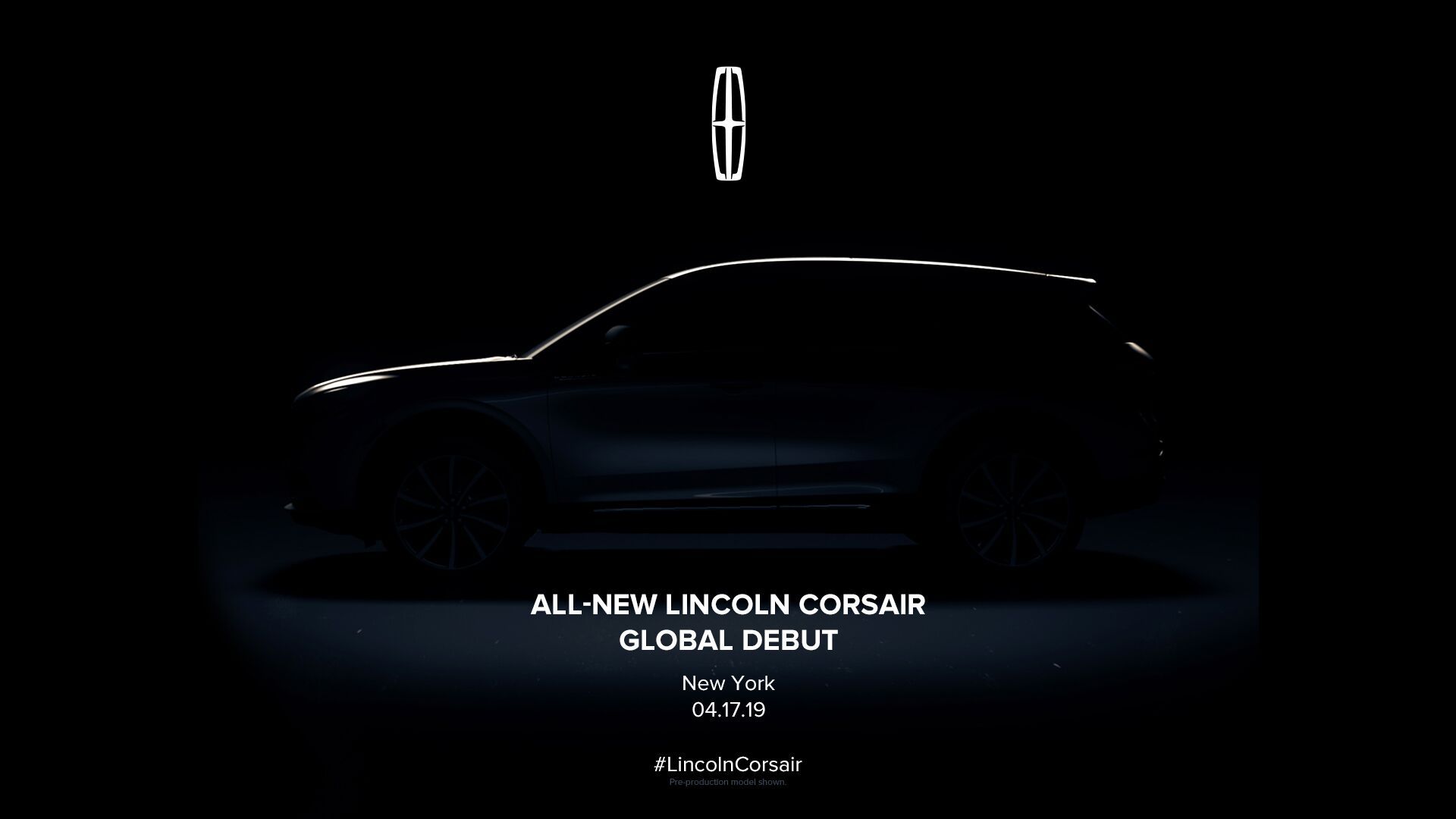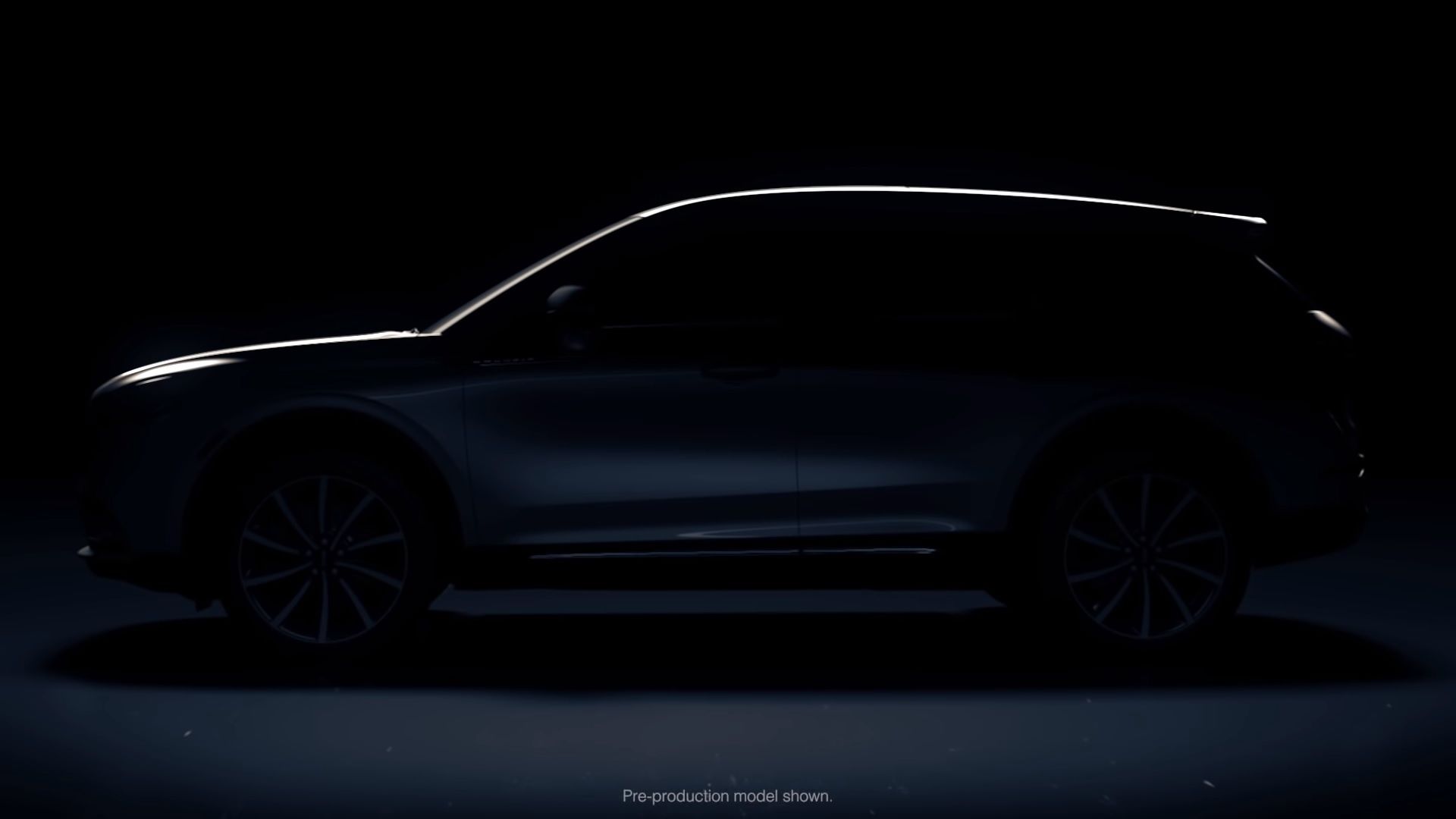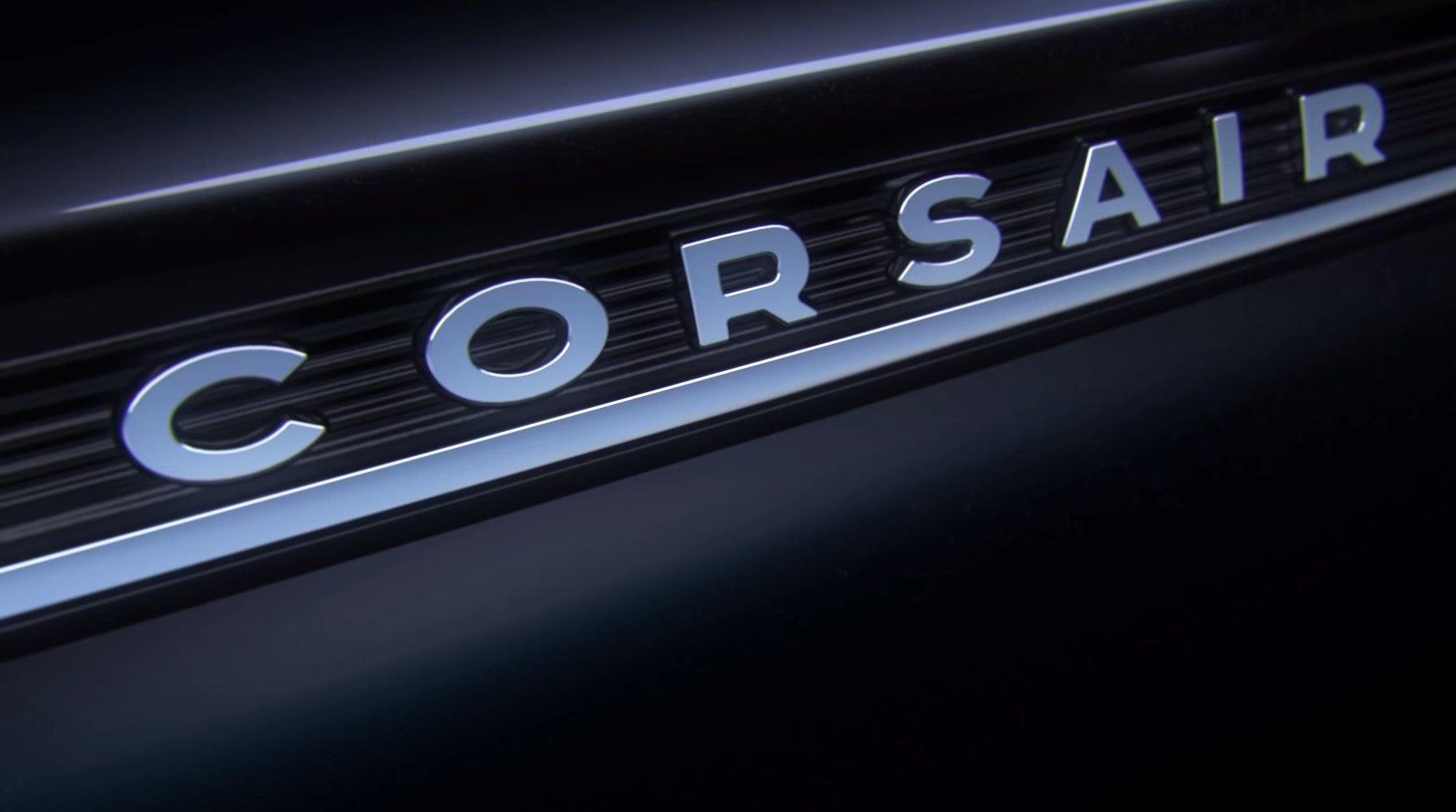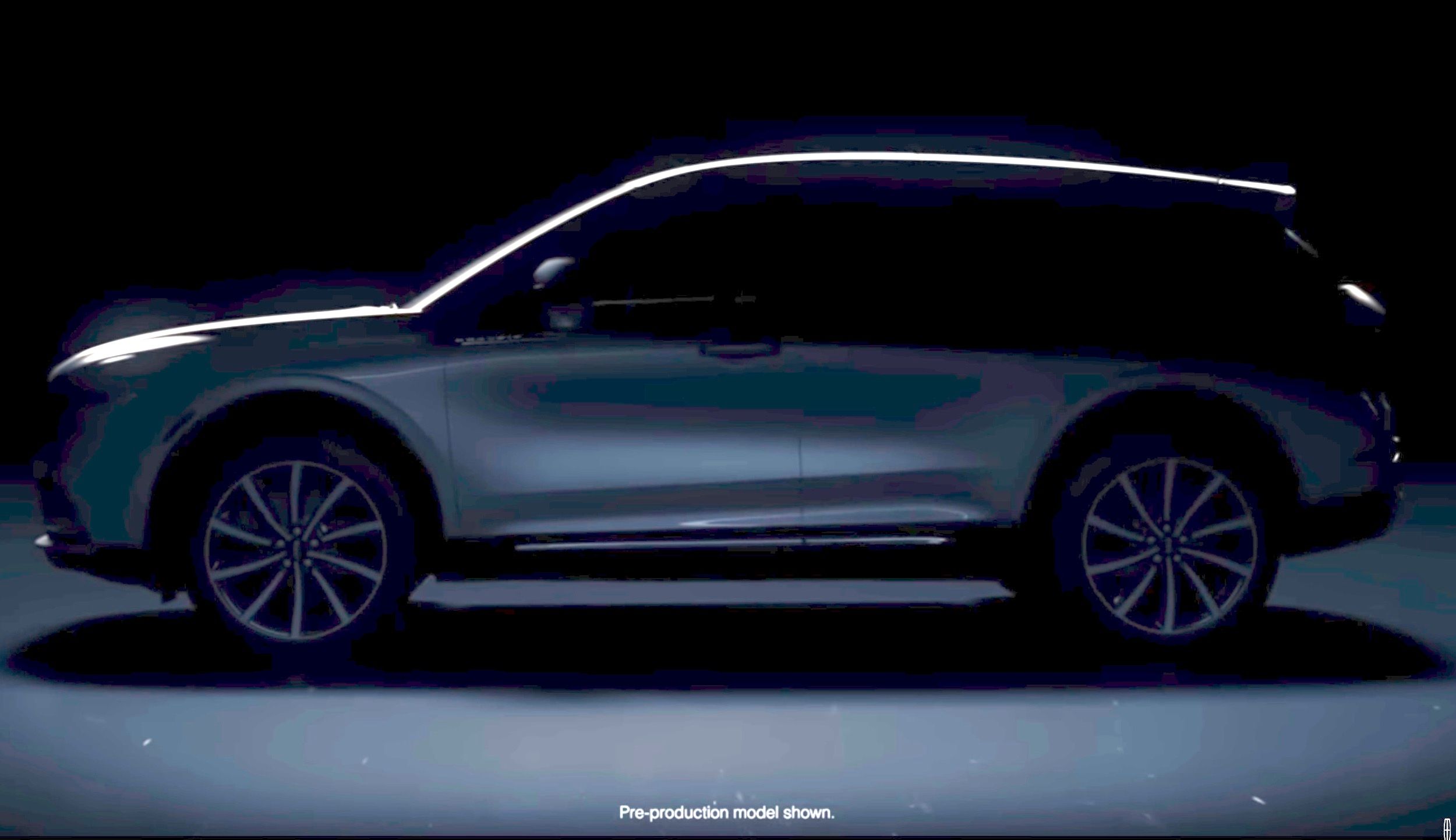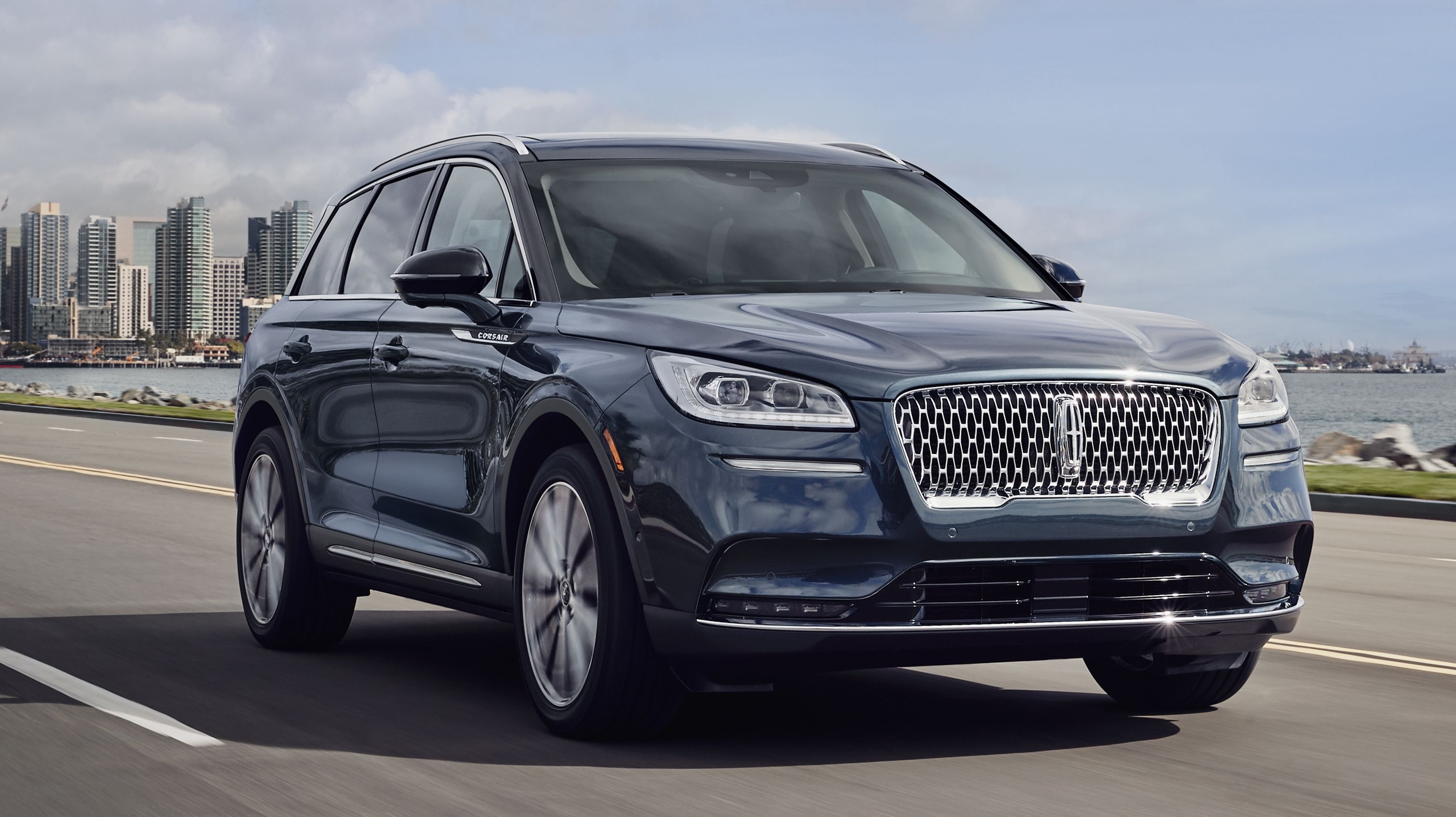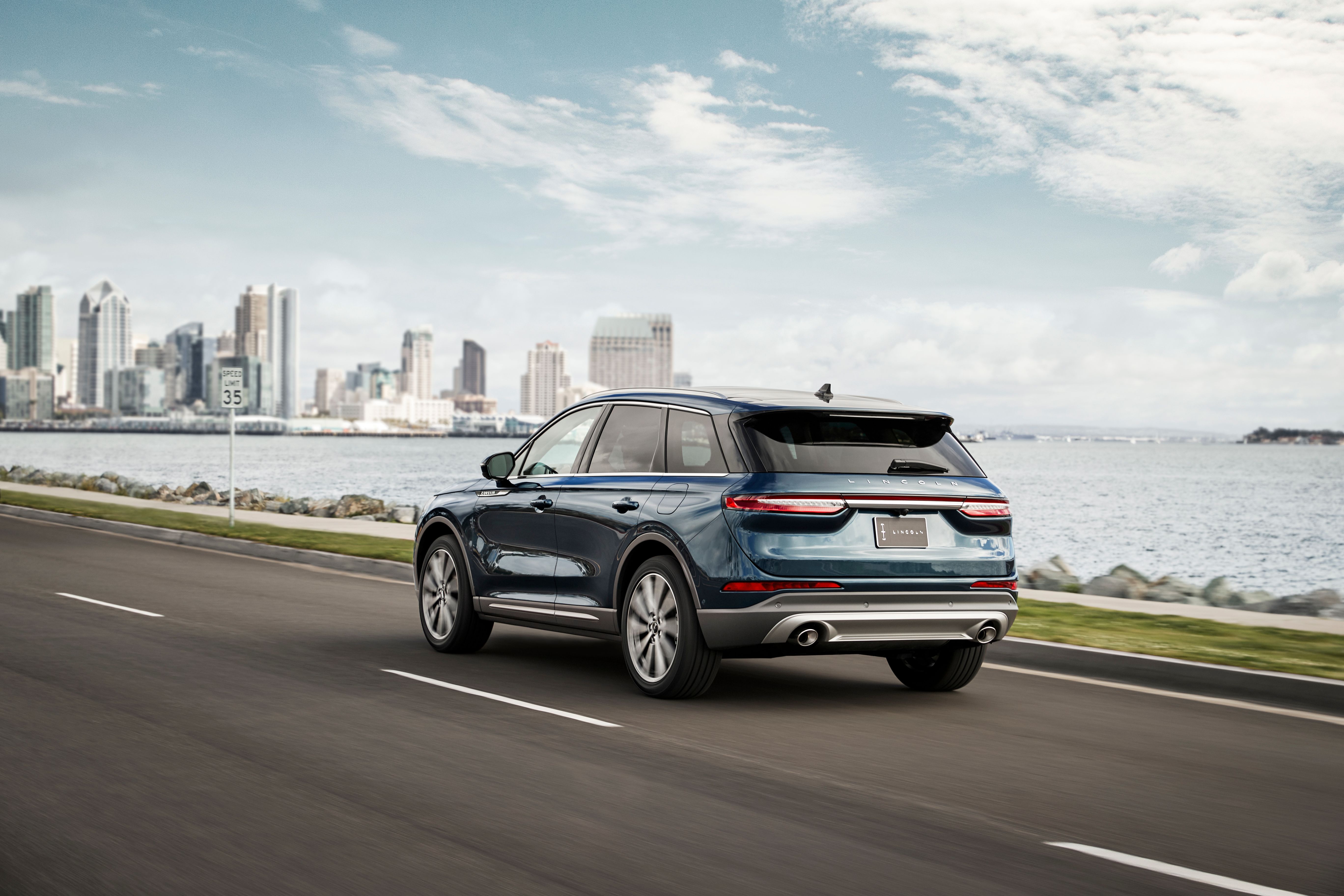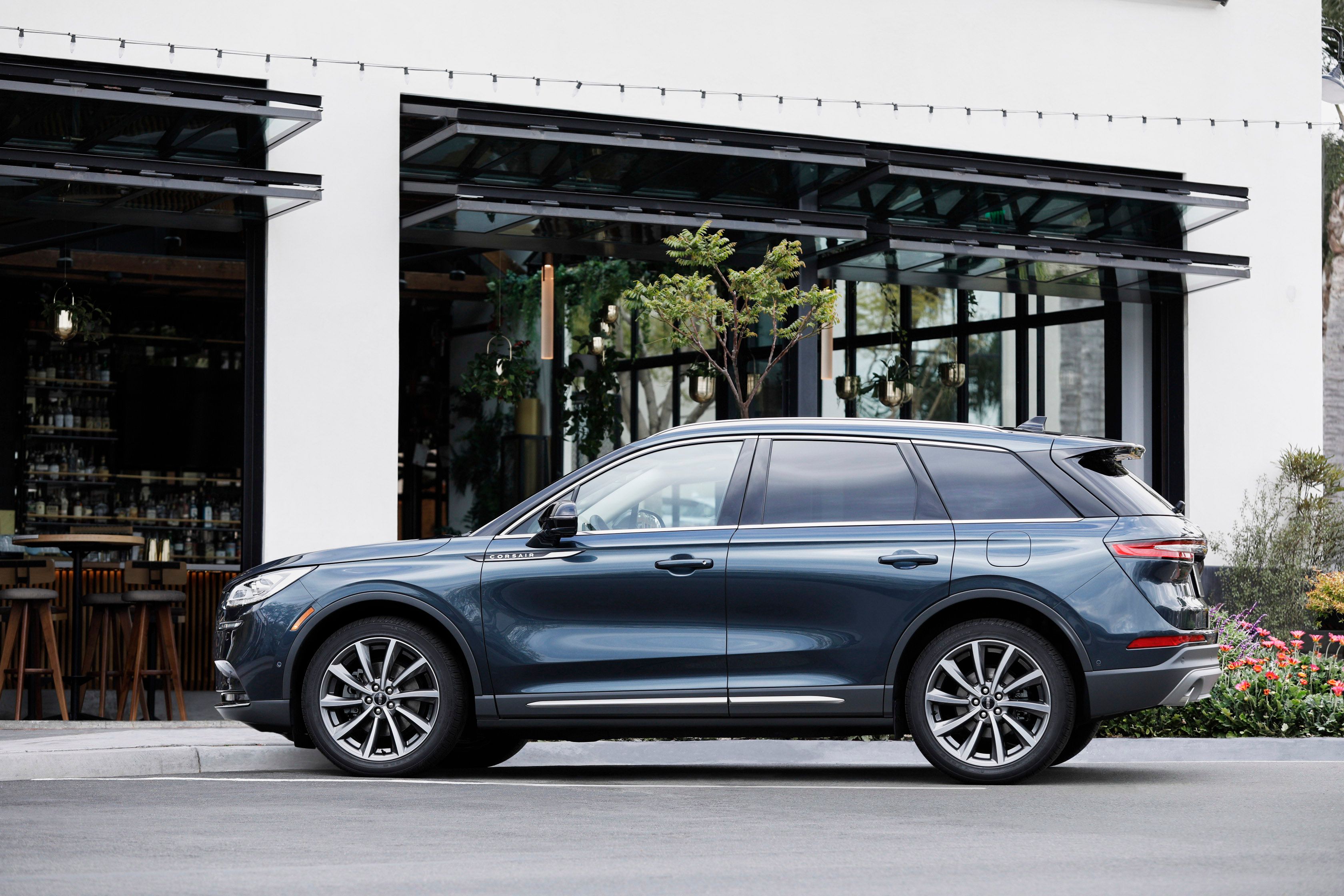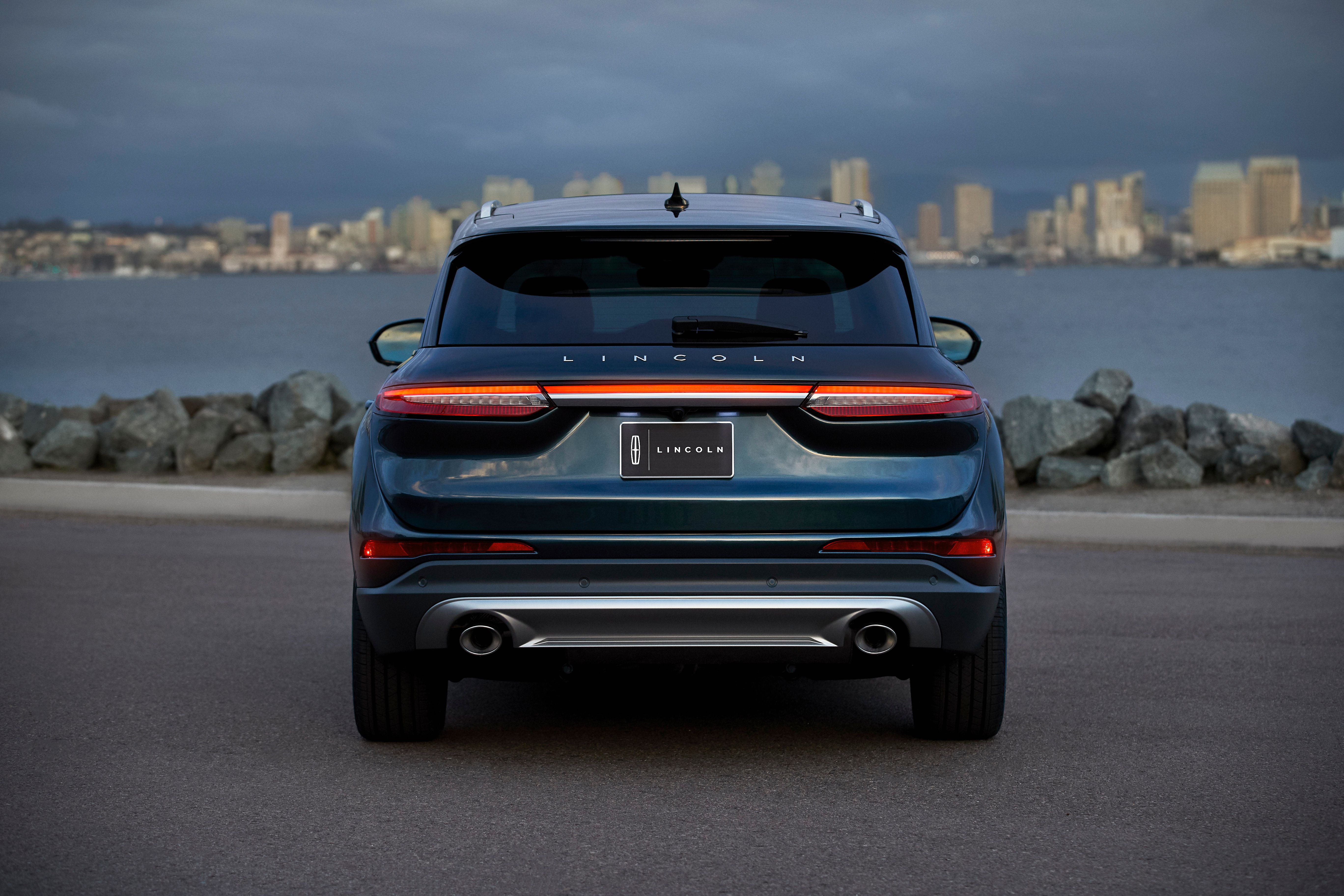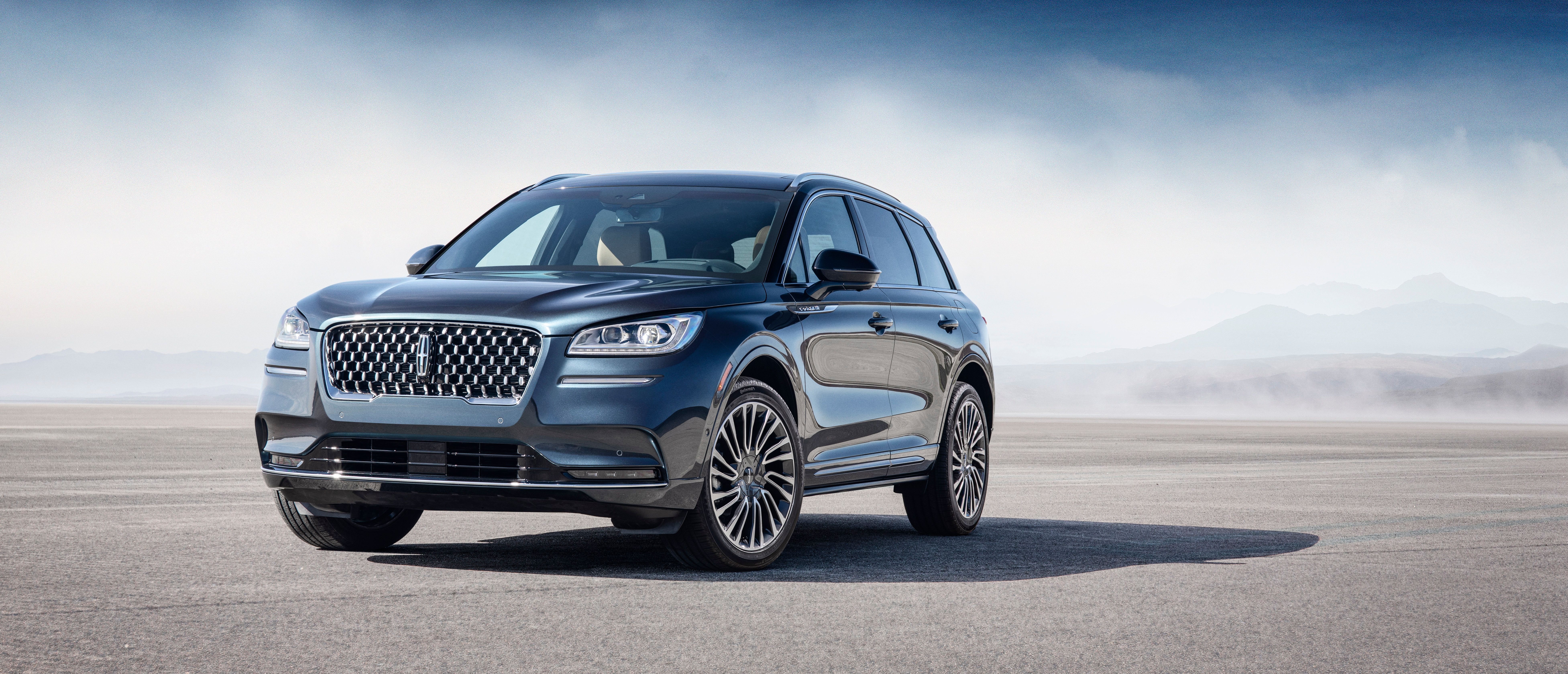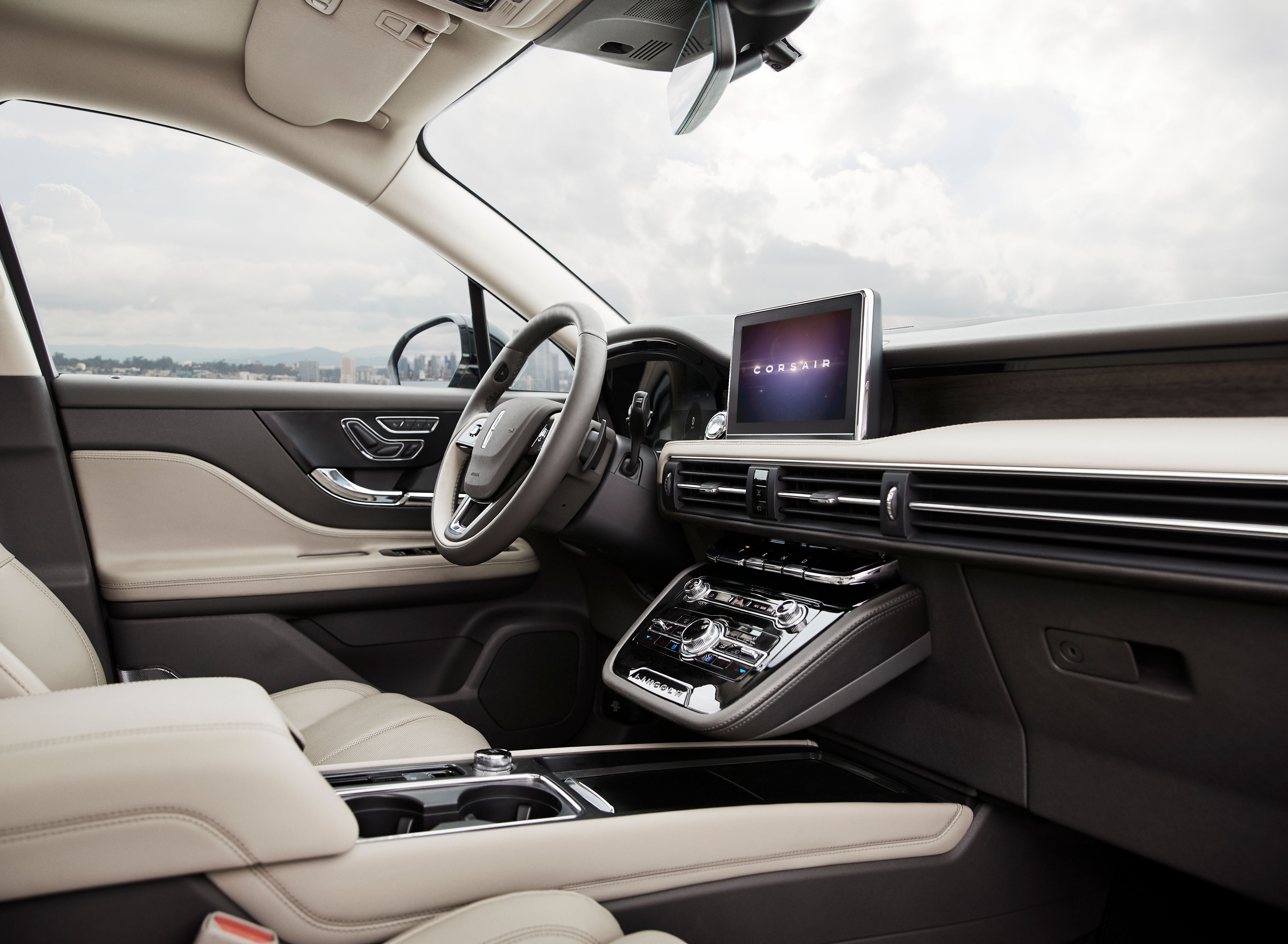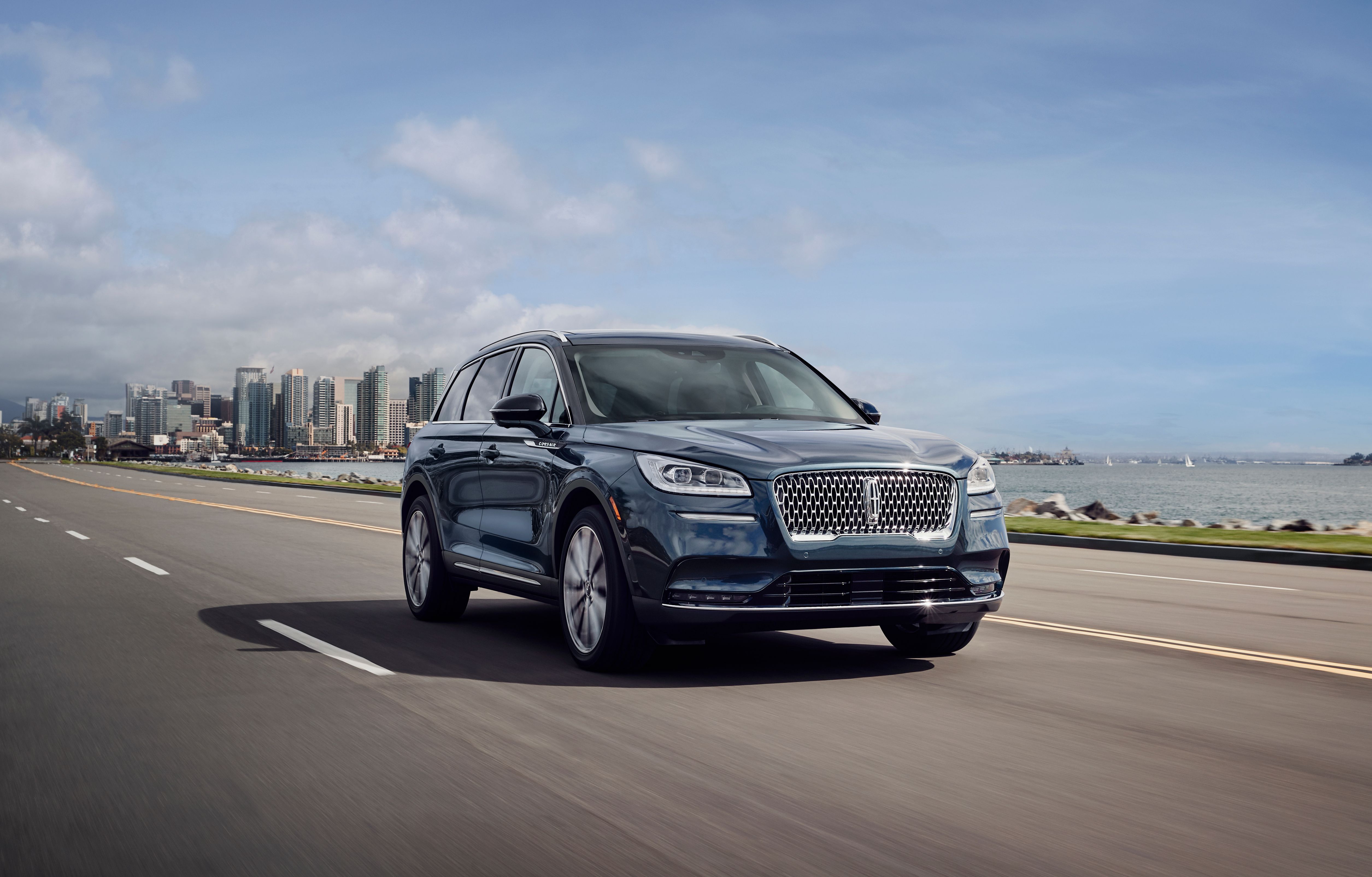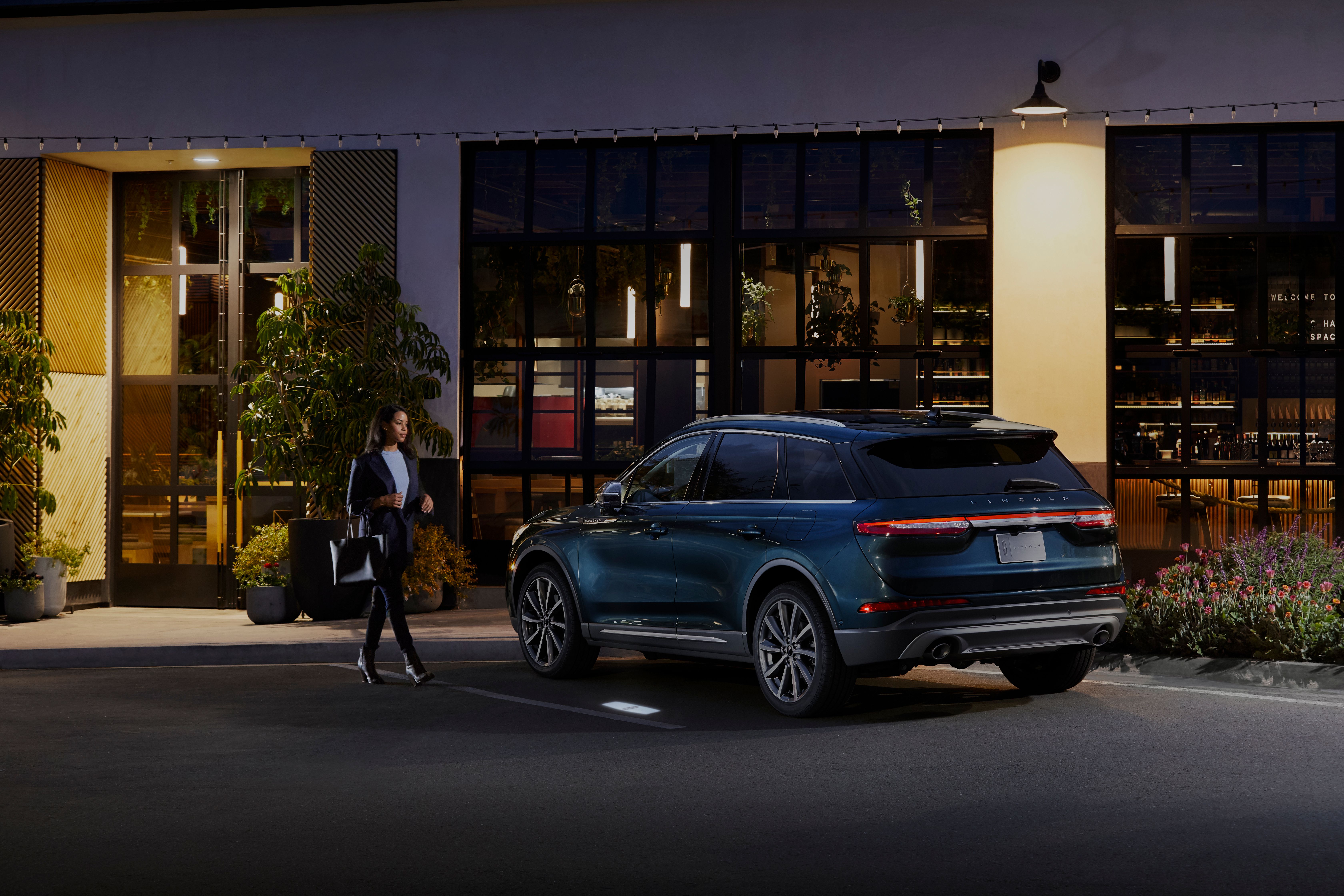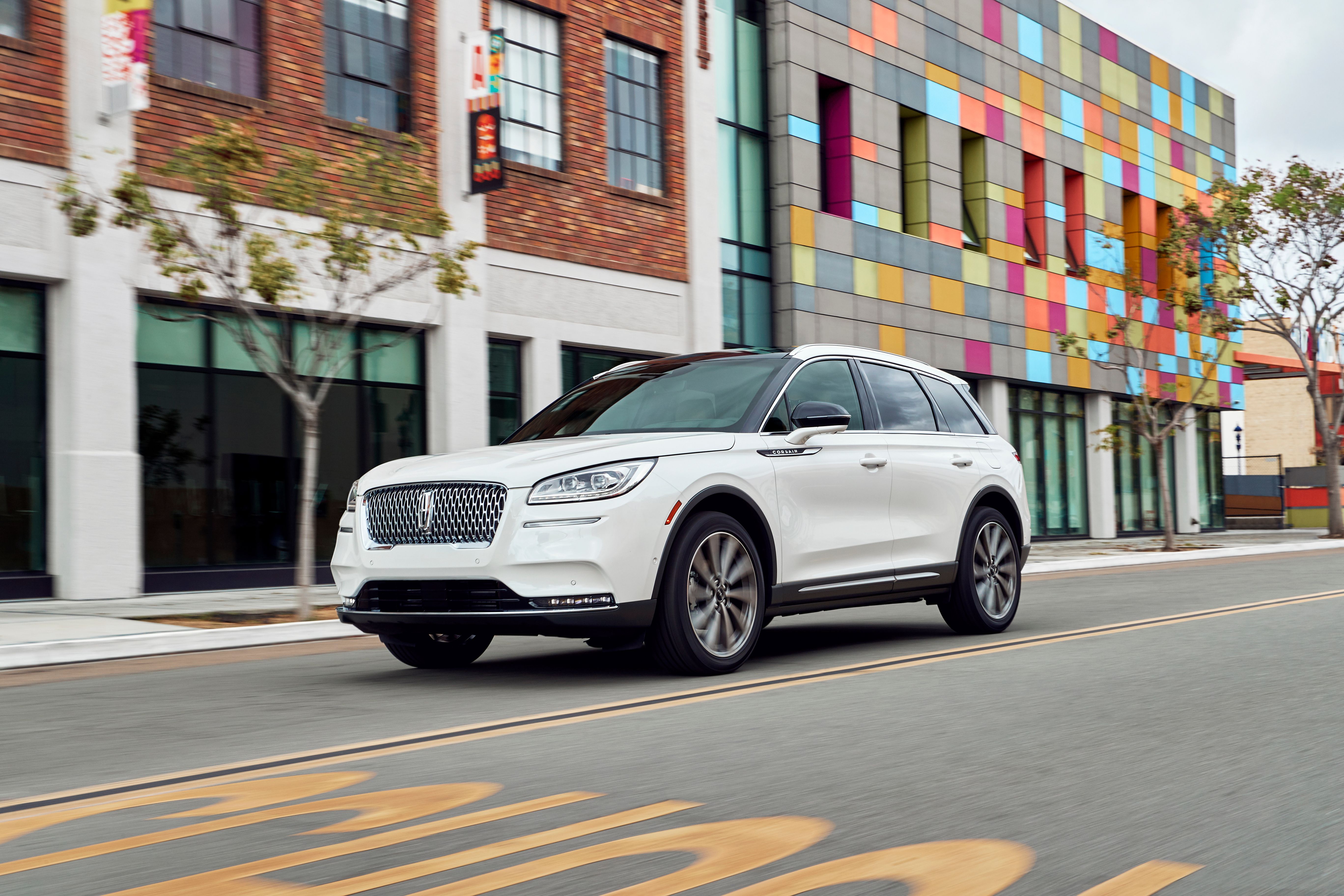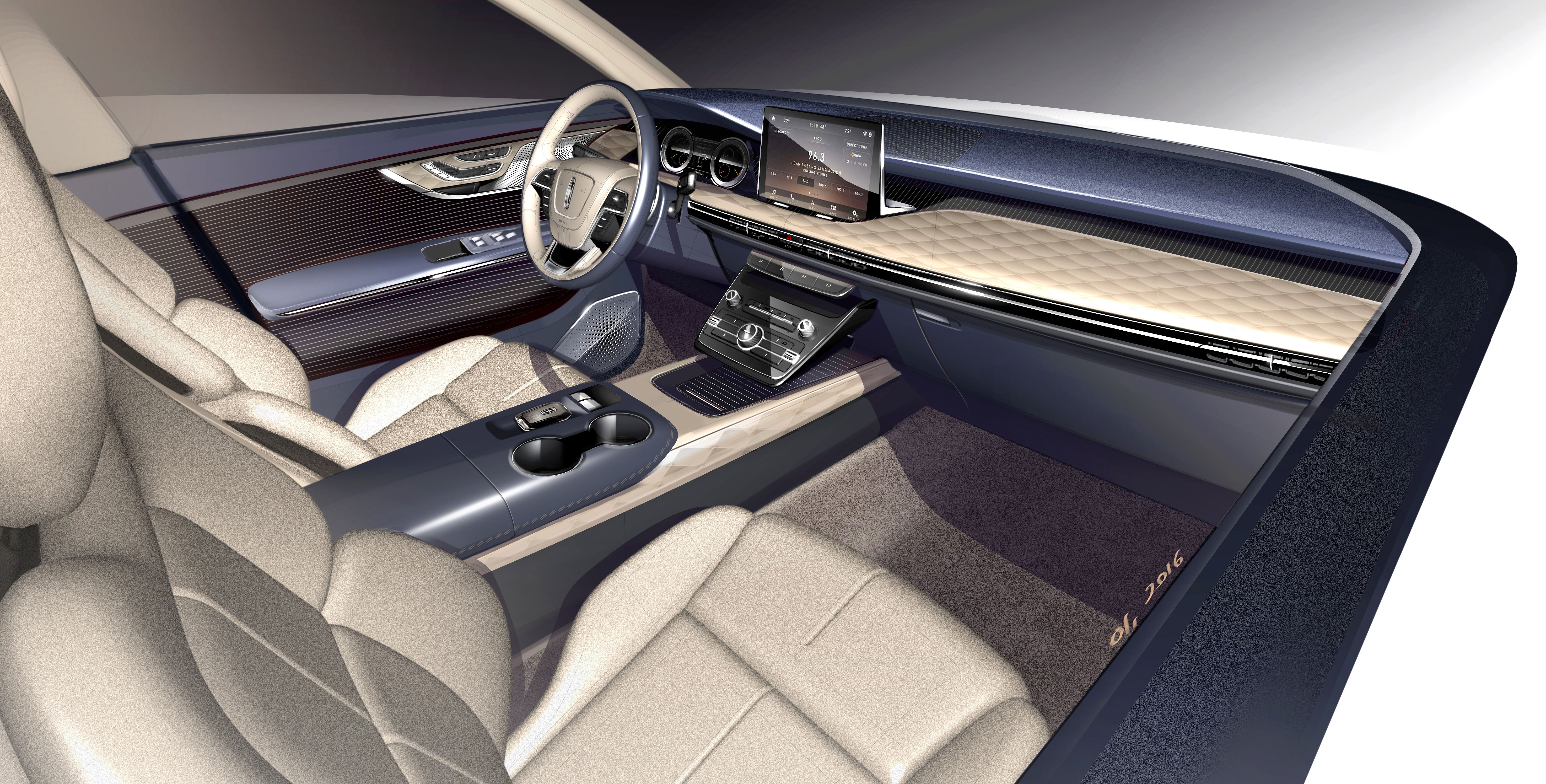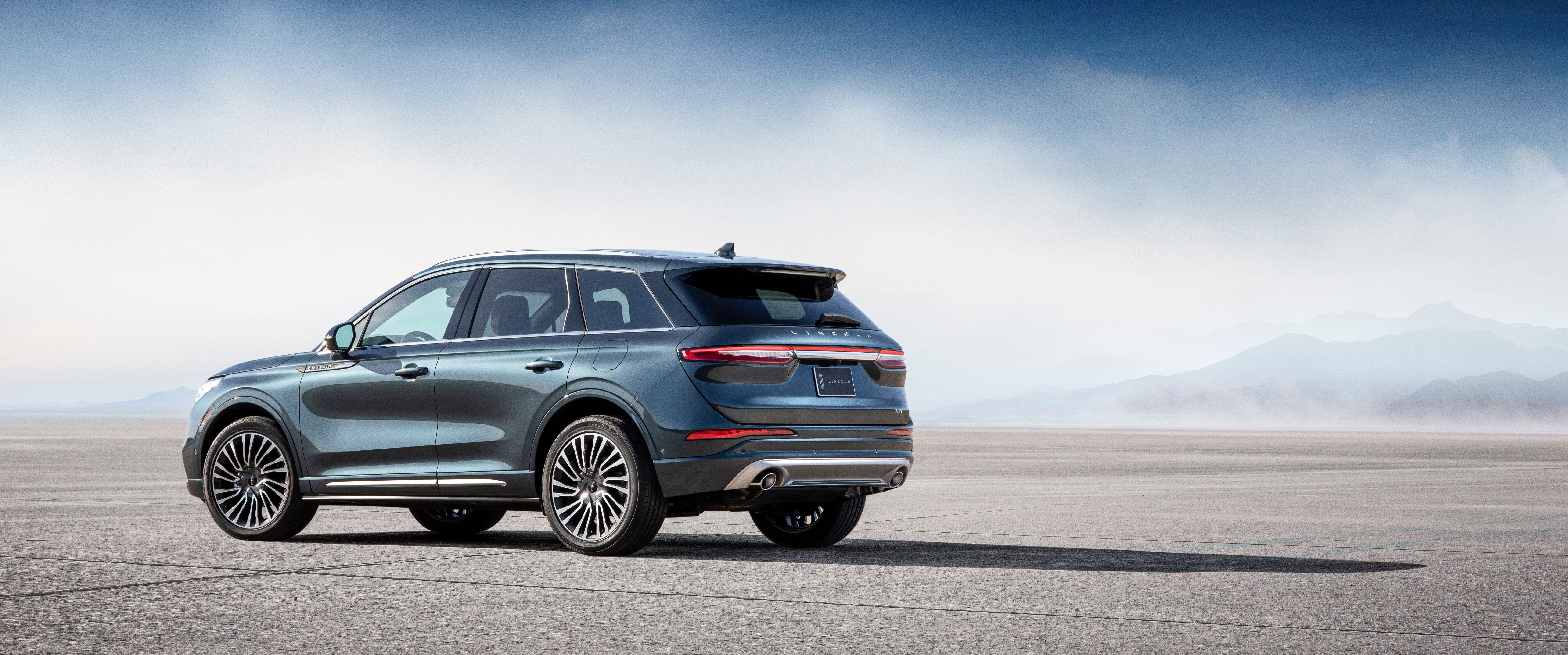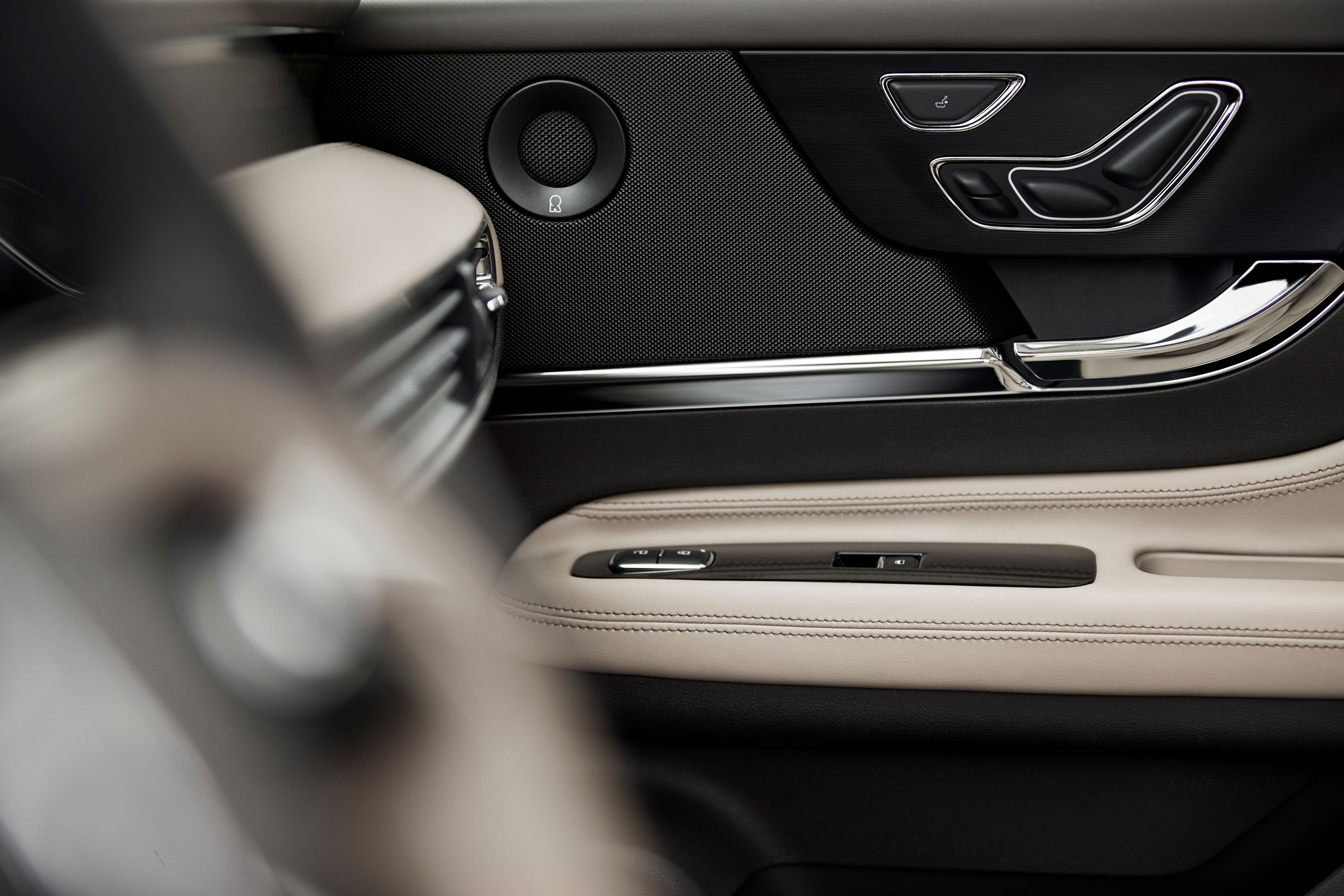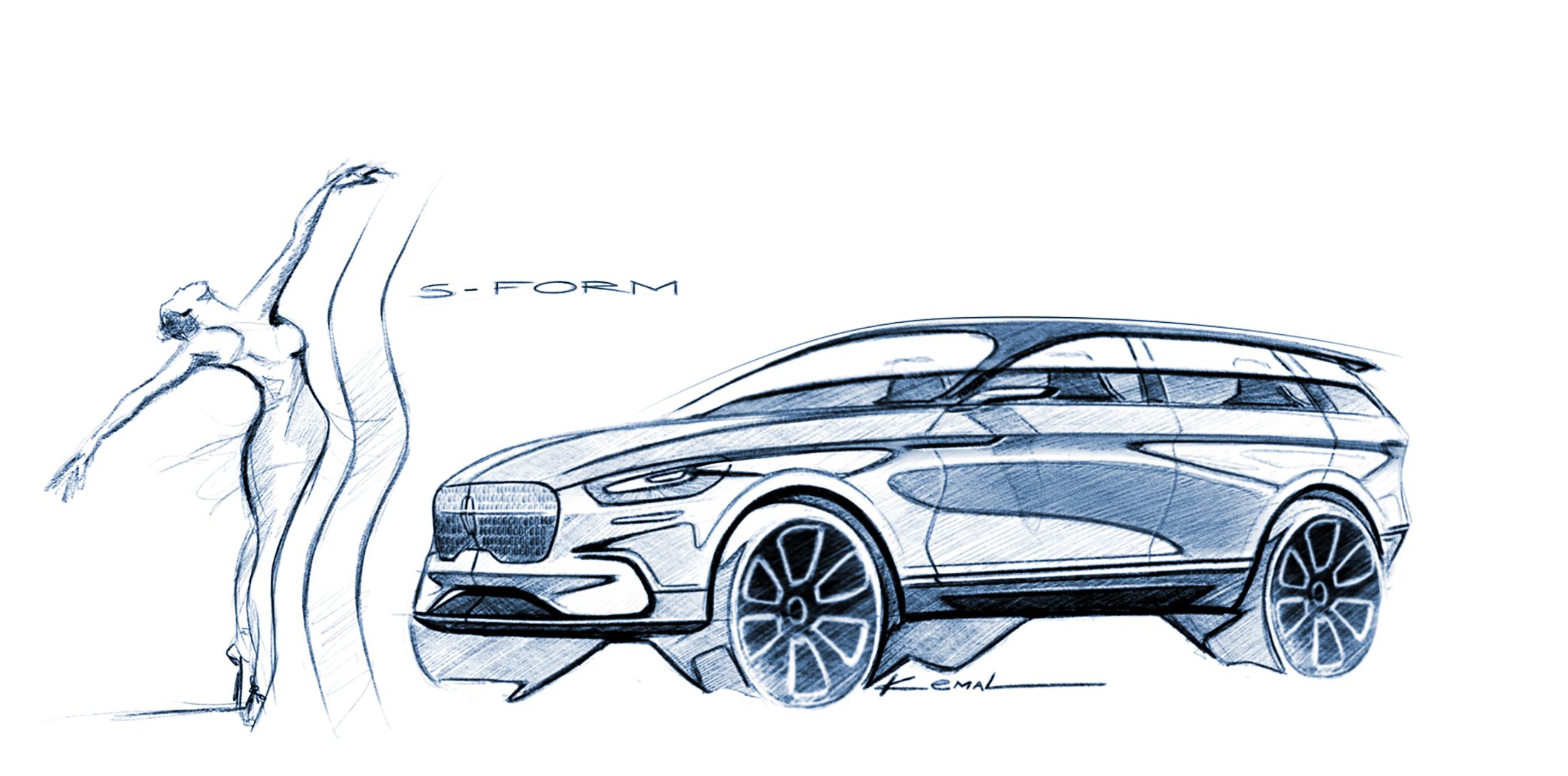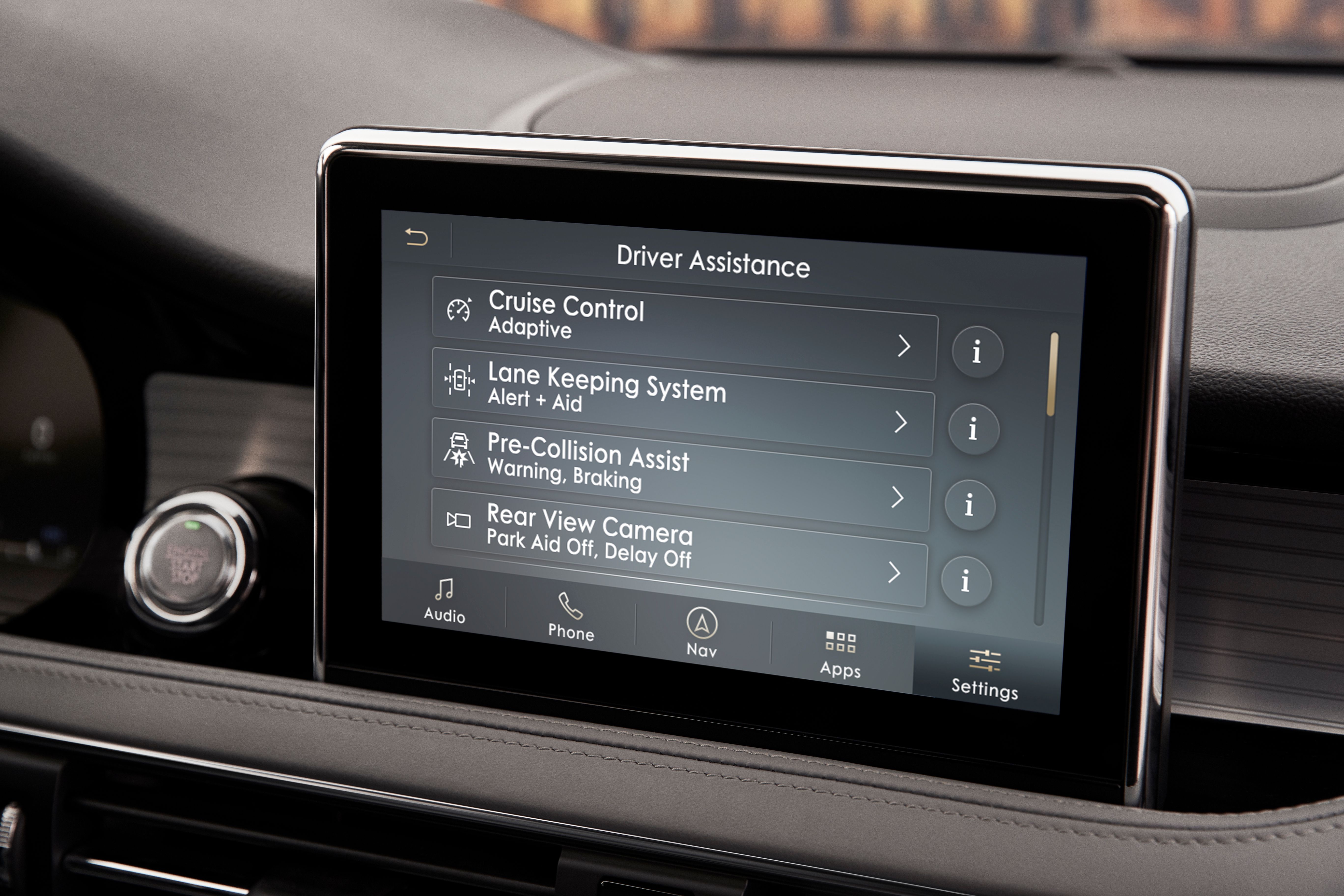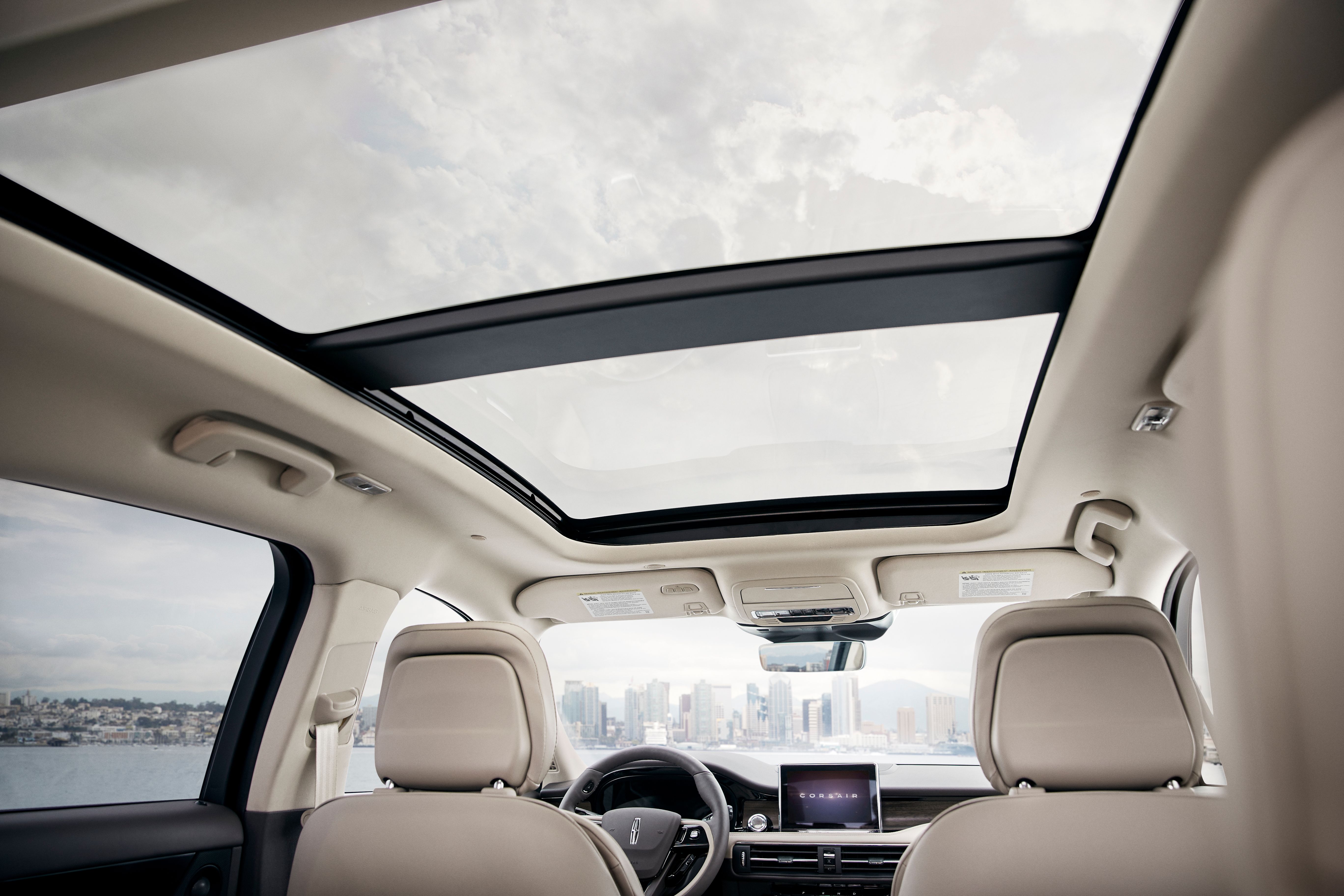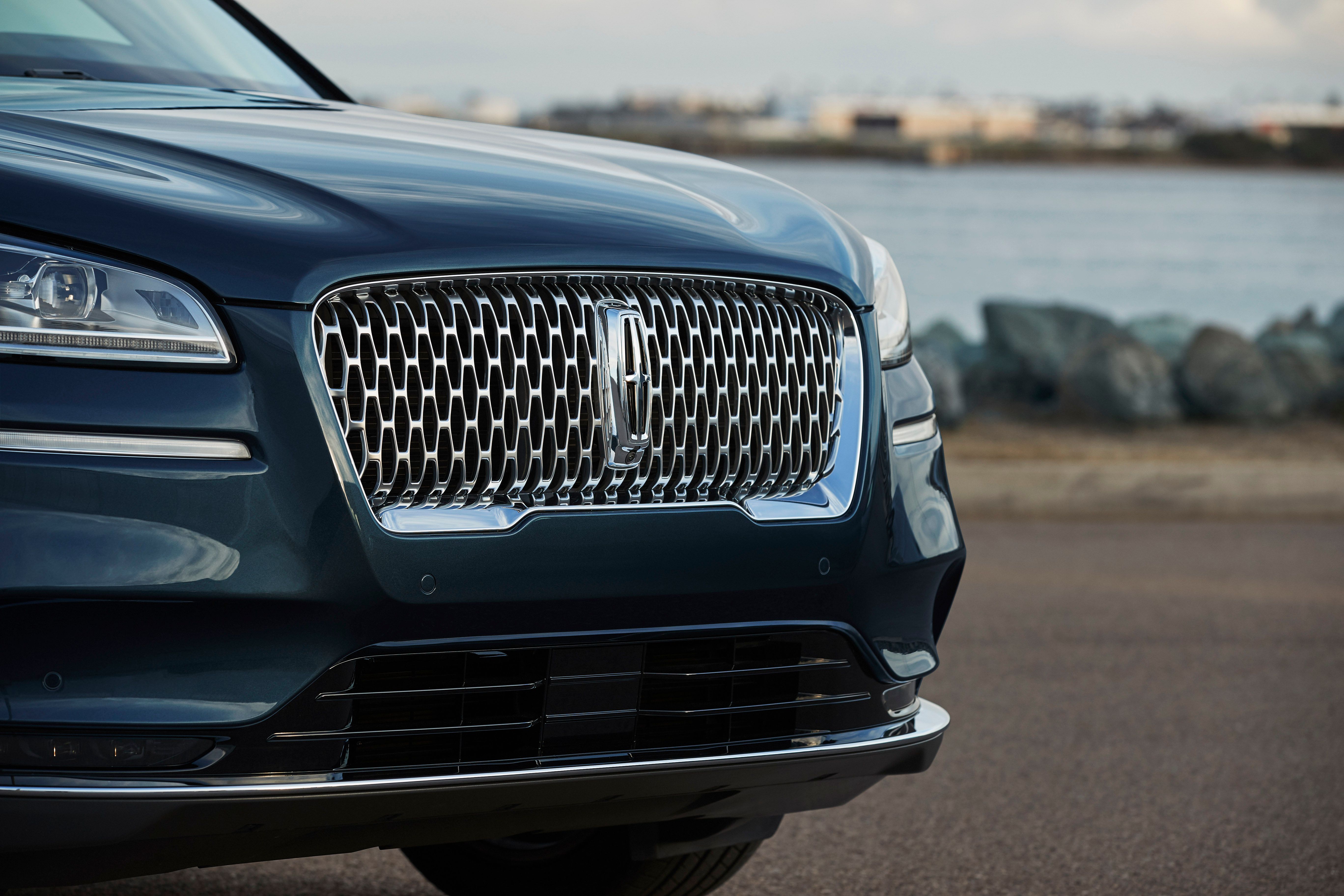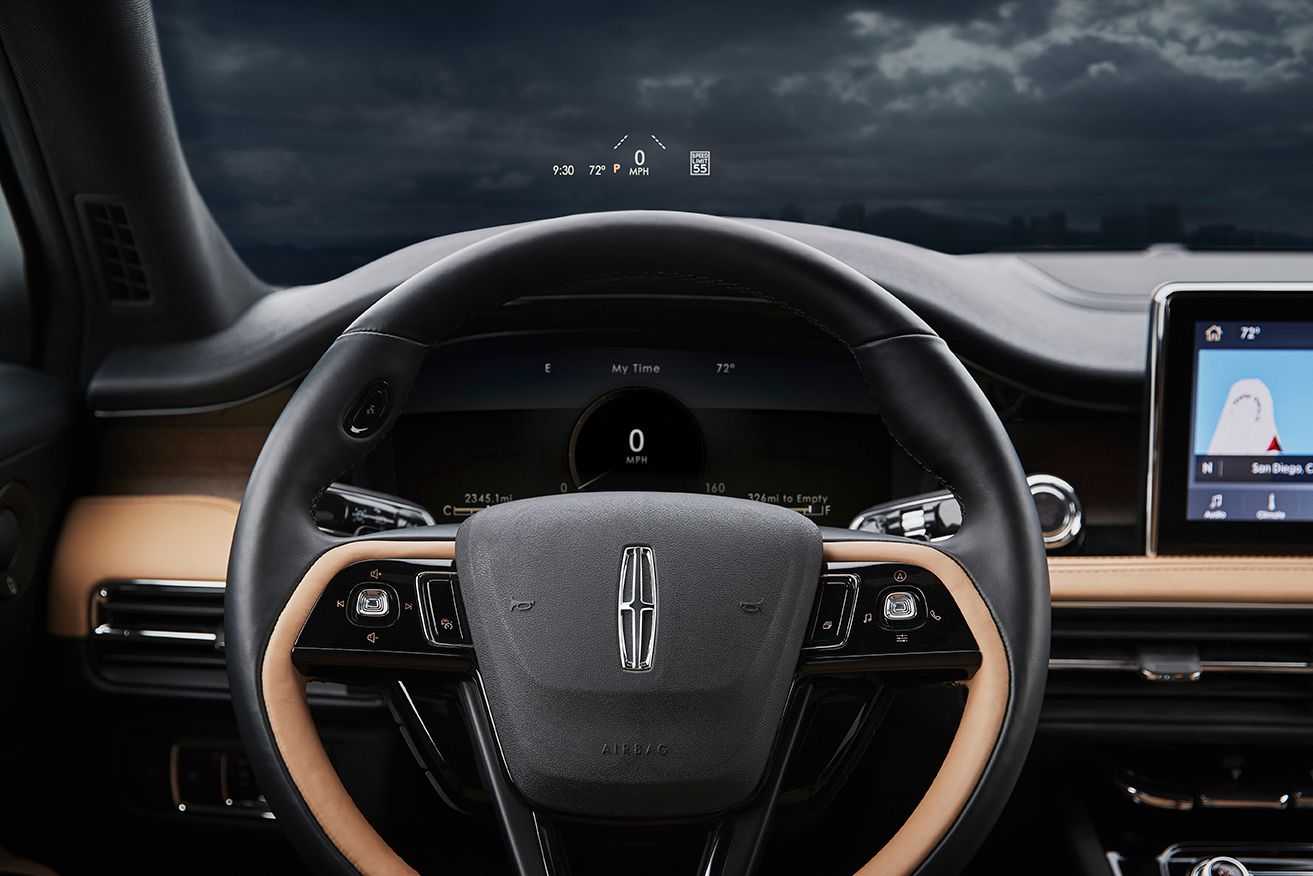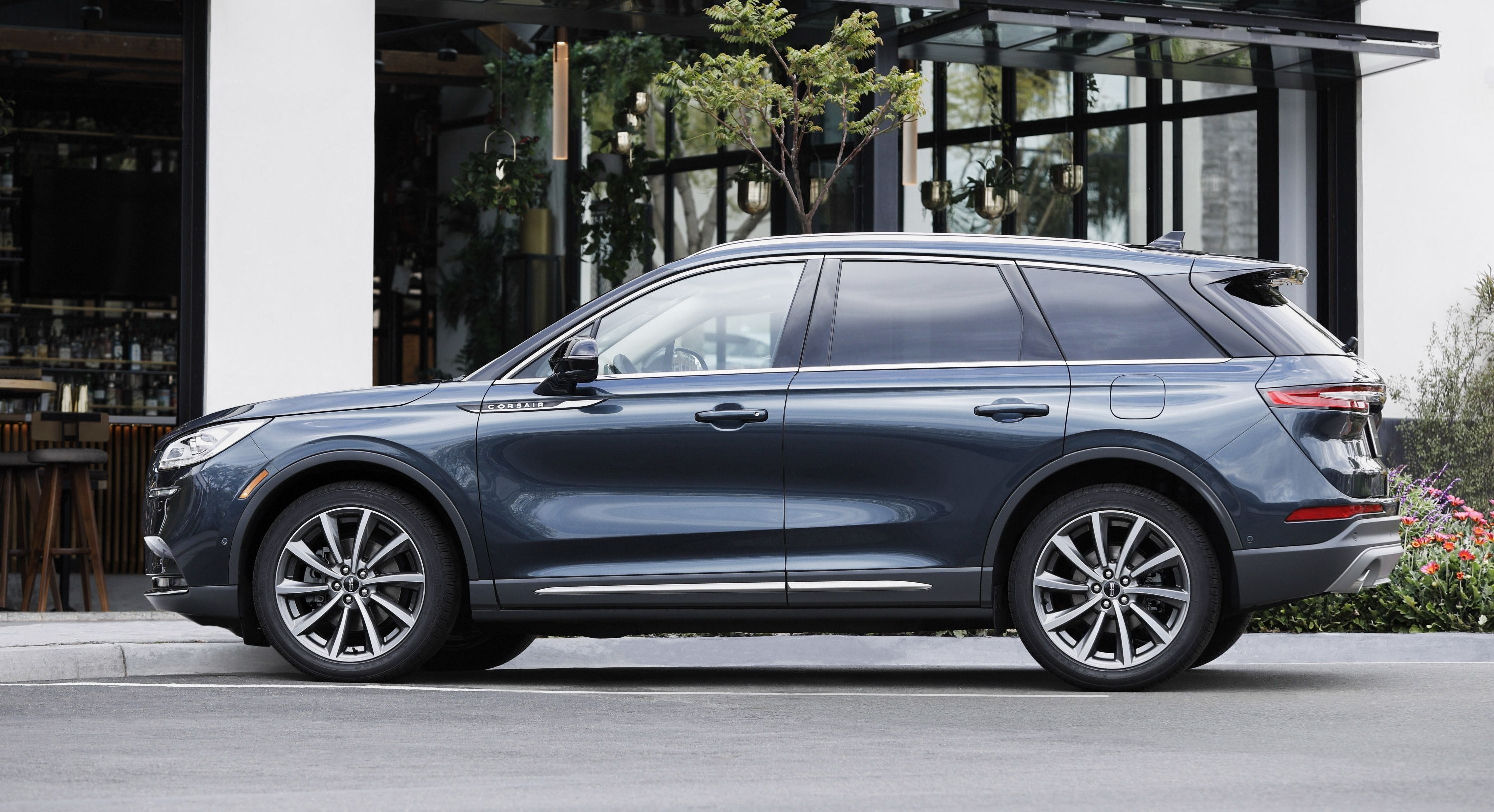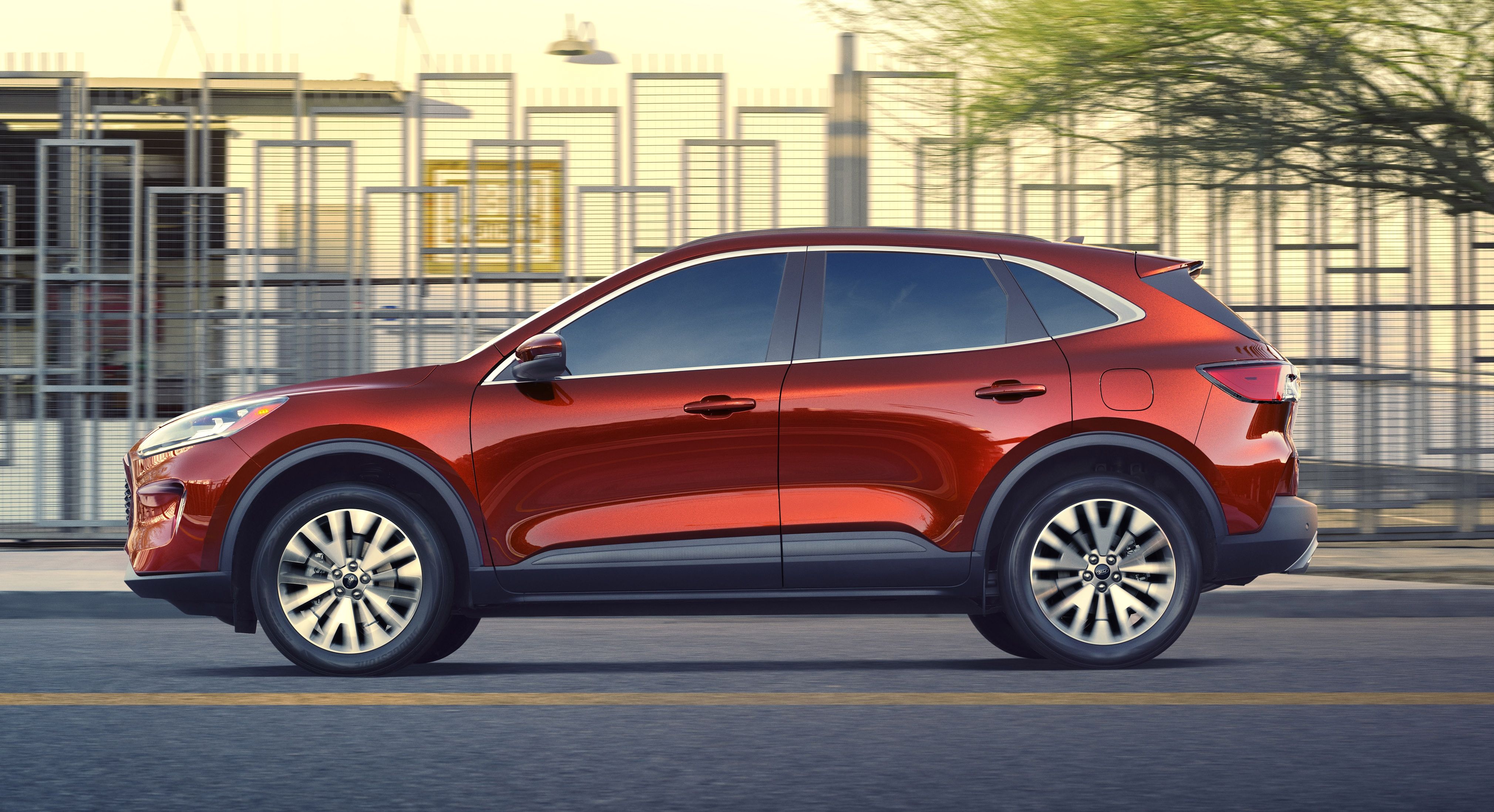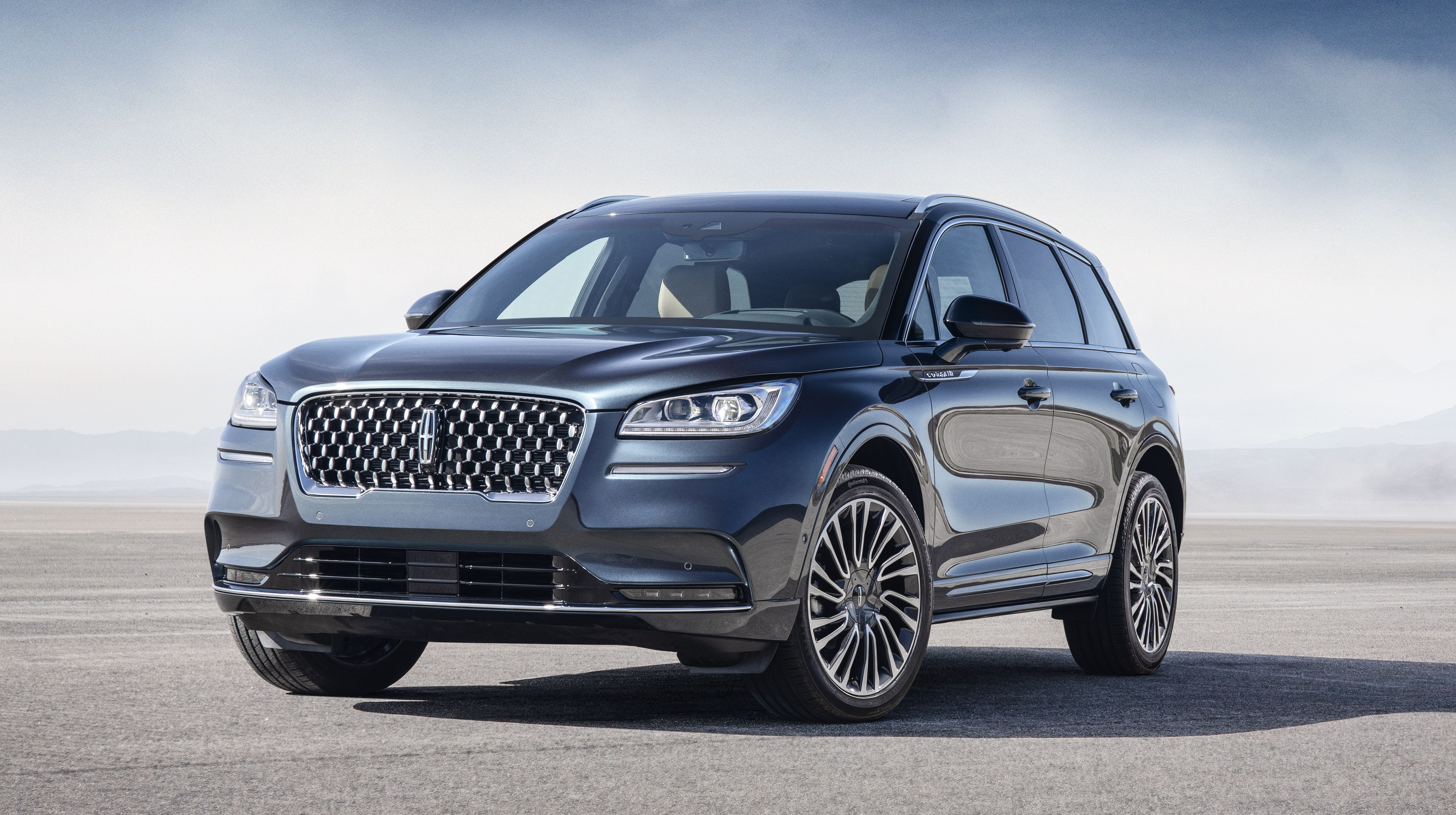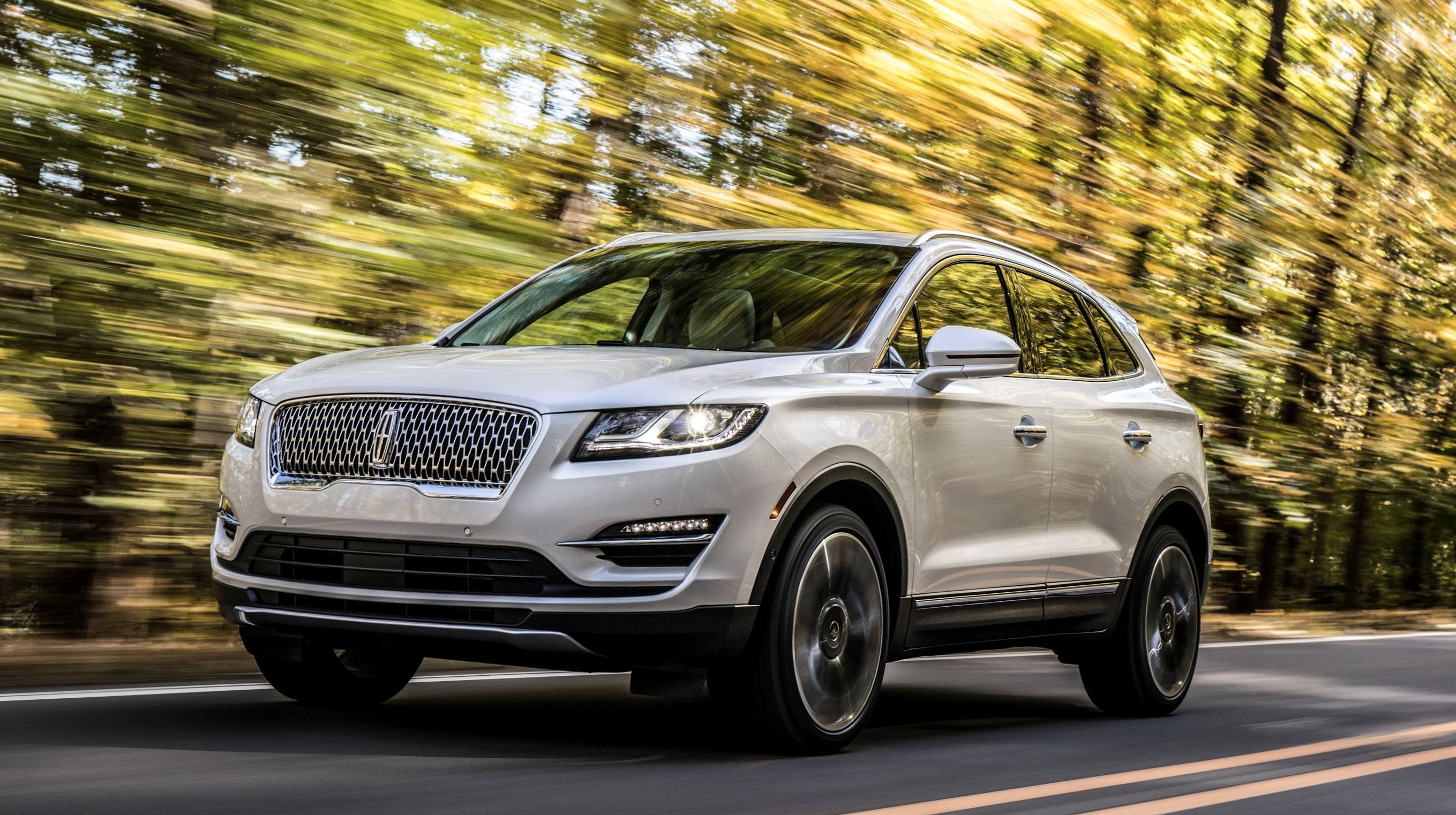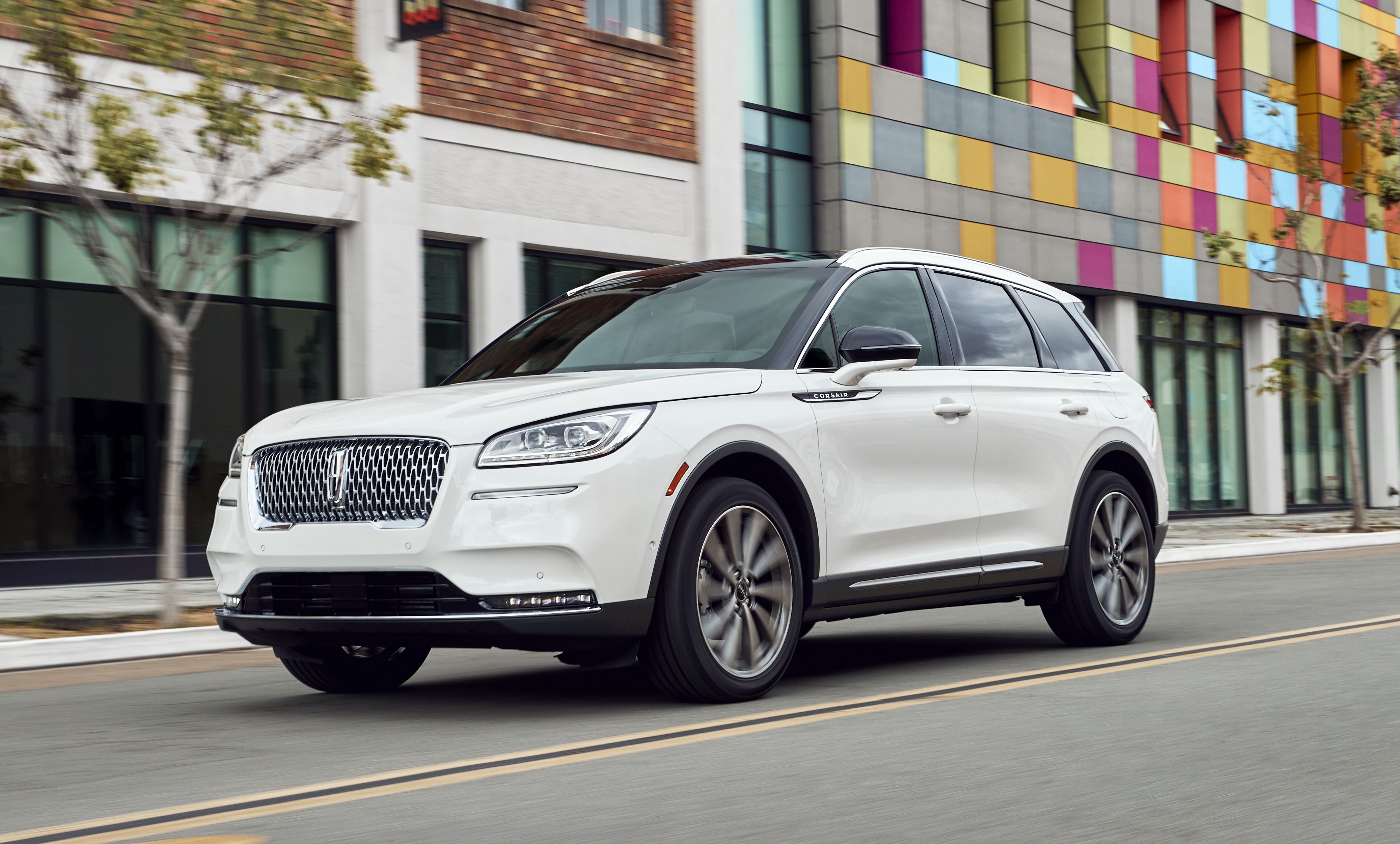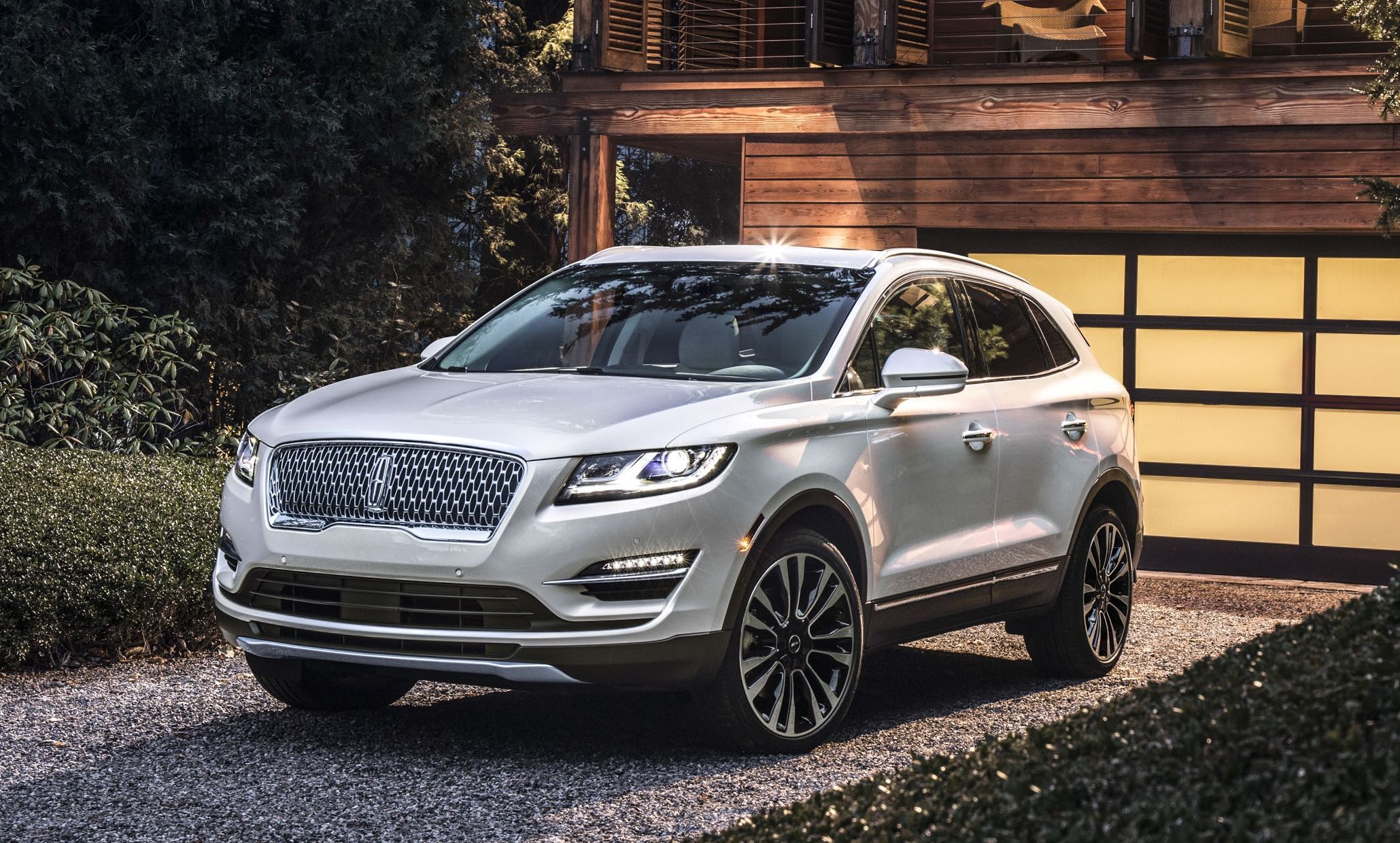The 2020 Lincoln Corsair is a compact crossover and the company's smallest SUV yet. The Corsair replaces the MKC, a crossover sold between 2014 and 2019 and also based on the Ford Escape. Unveiled at the 2019 New York Auto Show, the Corsair revived a nameplate that Ford used for the first time in 1958 for the Edsel brand. The Corsair is the third new nameplate introduced by Lincoln in the last two years following a decision to phase out its alphanumerical naming scheme.
Just like the MKC, the Corsair is based on the Ford Escape. But while the MKC was built on the old platform, the Corsair shares underpinnings with the fourth-generation, 2020 Ford Escape, also unveiled at the 2019 New York Auto Show. The redesign brings new technology and features as well as revised four-cylinder engines and eight-speed automatic transmission.
2020 Lincoln Corsair
- Make: Array
- Model: 2020 Lincoln Corsair
- [do not use] Vehicle Model: Array
2020 Lincoln Corsair Exterior
|
|
ids=837448,837449 |
no_overlay=false |
before_label=2020 Lincoln Corsair |
after_label=2019 Lincoln MKC> |
The Corsair retains the size and proportions of the MKC, but it borrows heavily from Lincoln's larger SUVs, like the Navigator and Aviator. This isn't surprising though since the MKC was the only SUV that still sported Lincoln's old design language.
Up front, we can spot the familiar grille shared by all modern Lincoln's, but the unit is larger than the MKC's. Again, this is specific to all recently unveiled Lincolns, which have larger front grilles. The headlamps are brand-new, featuring an exciting shape that becomes taller as it moves toward the fenders along the lower line of the engine hood. The daytime running lights are thinner and sit higher now, flanking the middle section of the grille. Because of this, the bumper looks cleaner, as Lincoln dropped the side intakes that housed the old DRLs. The lower grille retains the trapezoidal shape of its predecessor, but it's slimmer and sits lower in the fascia.
|
|
ids=837450,837451 |
no_overlay=false |
before_label=2020 Lincoln Corsair |
after_label=2019 Lincoln MKC> |
The Corsair's profile looks pretty generic compared to other SUVs on the market, but Lincoln made some notable changes. While the beltline and the creases on the doors are pretty much in the same place, the Corsair features new trim with badge lettering on the front doors for a more premium look and a much larger quarter window. Whereas the MKC has thin windows and thick pillars behind the rear doors, the Corsair has wide windows and really thin pillars. This design extends the glasshouse almost all the way to the tailgate, which makes the Corsair look a bit boxier than before. Look close enough, and you'll notice that the roof has the same sporty shape, but the larger quarter window gives the Corsair a more elegant look.
If you were a fan of the MKC's wide taillights, you'll be happy to know that the Corsair carries over with this design. But the lights are a bit slimmer now, while the center section is thicker, so the entire assembly looks more uniform. The tailgate is no longer flat, now featuring a deeply sculpted lower section that extends from the license plate recess. The red lights in the bumper are longer, while the diffuser looks simpler, but still sporty thanks to its aluminum paint and round exhaust pipes.
Overall, the Corsair blends in better with the rest of the Lincoln lineup, especially with the big Navigator and Aviator haulers.
2020 Lincoln Corsair exterior dimensions
|
Length |
180.6 |
|---|---|
|
Wheelbase |
106.7 |
|
Width (mirrors folded) |
76.2 |
|
Height |
64.1 |
2020 Lincoln Corsair Interior
The Corsair looks a lot like the Aviator inside the cabin, and it's a massive departure from the old MKC. It has the same multi-layered dashboard as the Aviator, but with a different design for the A/C vents. Not only larger, but the vents also extend on the passenger side, a feature that reminds me of Audi's recent interiors. The infotainment display is also similar to the Aviator's, placed atop the center tier of the dash in an almost vertical position. The eight-inch unit you see in the photos is optional.
Unlike the Aviator, the Corsair has a unique center stack that's completely separated from the center console. Not only that, but it also seems as if the entire control unit is retractable and can be hidden in the dash. It's not the case, but it's a cool design feature you don't see too often. My only concern here is that there are storage bins under the stack and access to them is rather limited.
Lincoln also revised the steering wheel and door panels for this SUV, and both look more and more upscale now. The instrument cluster with also new, with a prominent display showing all information in the more expensive trim. Another cool feature is that many upholstery options include two colors. Lincoln even introduced three new combinations. There's Beyond Blue that combines vivid blue and white, Cashew with rich tan and black, and Medium Slate with soft gray and ebony.
As far as tech goes, the Corsair comes with SYNC3 with AppLink, multiple power outlets, and Wi-Fi as standard. The wireless charging port in the front-row armrest is optional, despite the luxury status of the vehicle. The seats include 24-way adjustability, massage function and additional lumbar support for the driver and front passenger. Second-row legroom is greater thanks to the sliding seats that offer up to six inches of travel and a 60/40 fold-flat or split-bench option. Lincoln brags that the Corsair offers more legroom in the second row than the Mercedes-Benz GLS and Tesla Model X, but there are no actual figures to run by.
Another significant improvement over the MKC is the dual-wall dashboard in the engine compartment. This additional insulation ensures that you won't hear much of the engine while driving, but it also keeps vibrations out. Paired with Active Noise Control technology, the dual-wall dash makes the Corsair's cabin as quiet as the interior of a larger, much more expensive vehicle.
With engine and road noise out of the way, Lincoln can easily turn the Corsair into a concert hall. While the standard audio system is good enough for the average listener, true audiophiles will want the 14-speaker Revel system with unique placement, tuning, and calibration. If you're after fancy, bespoke features, the Corsair also comes with six unique symphonic chines instead of standard electric alerts, all recorded by the Detroit Symphony Orchestra. You'll hear these chimes every time you leave a door open or a seat belt unbuckled.
The Corsair also comes equipped with Phone As A Key technology. Activated through the Lincoln Way app, it enables you to lock and unlock the doors, open the liftgate, and start and drive the SUV with your smartphone. Although it renders the smart key fob useless, it includes similar features like a personal profile through which you can adjust up to 80 features, including seat, mirror, and pedal positions.
But what if you run out of battery and you need to enter the car? Well, you can use the standard exterior keypad by entering a backup code to get it and then the infotainment touchscreen to start the engine.
2020 Lincoln Corsair interior dimensions
|
Headroom front/rear |
39.5/38.7 |
|---|---|
|
Legroom front/rear (maximum) |
43.2/38.6 |
|
Hip room front/rear |
55.6/50.8 |
|
Shoulder room front/rear |
57.1/56.3 |
|
Passenger volume |
102.5 |
|
Cargo volume Behind front row |
57.6 |
|
Cargo volume Behind rear row |
27.6 |
2020 Lincoln Corsair Drivetrain
As expected, the Corsair shares underpinnings with the Ford Escape, just like its predecessor. As a result, the crossover carries over with the same engines as the MKC, with only mild changes in terms of performance.
Just like the outgoing MKC, the Corsair comes standard with a 2.0-liter four-cylinder engine. The unit is projected to deliver 250 horsepower and 275 pound-feet of torque, a small five-horsepower and five-pound-foot increase over the old mill. Lincoln has yet to release figures, but the updated engine should return better fuel economy. Expect the highway mileage to increase slightly to 30 mpg.
Moving over to the optional unit, it's the same 2.3-liter EcoBoost four-cylinder. While the 2.0-liter mill is a tad more powerful, the 2.3-liter lost a bit of power. It now generates 280 horsepower, five horses less than in the MKC. Torque is up by five pound-feet though, for a new total of 310 pound-feet. Again, while performance remains similar, the updated engine should deliver slightly better mileage, likely of up to 27 mpg on the highway.
Both engines mate to Lincoln's already familiar eight-speed automatic transmission. This is a bit disappointing as I was expecting the brand to use the newer 10-speed automatic gearbox in this SUV. Granted, the eight-speed automatic is a big improvement over the MKC's six-speed gearbox, but the 10-speed unit would have been Lincoln's best choice.
Both drivetrains are available with an all-wheel-drive system. Revised for the Corsair, it provides all-weather capability and optimizes overall efficiency by switching between front- and all-wheel drive depending on road conditions, speed, and temperature. The AWD also changes its setup depending on the driving mode engaged: Normal, Excite, Slippery, Deep Conditions, and Converse.
Finally, Lincoln made a big improvement to the suspension by adding an integral bush system to the rear axle. This upgrade should give the Corsair a smoother ride by directly absorbing impacts on any type of road.
Although it was rumored to break cover with a hybrid drivetrain as well, the Corsair remains a gasoline-only SUV for the time being. But an electrified version could break cover by the end of the year. Don't expect it to feature the Aviator's V-6 hybrid combo with 400 horsepower and 600 pound-feet though. Lincoln will probably pair an electric motor to one of the EcoBoost four-cylinder engines, but the fuel economy will increase dramatically compared to the gas-only mills.
2020 Lincoln Corsair drivetrain specifications
|
Engine |
Turbocharged 2.0-liter I-4 |
Turbocharged 2.3-liter I-4 |
|---|---|---|
|
Horsepower |
250 hp |
280 hp |
|
Torque |
275 lb.-ft. |
310 lb.-ft. |
|
Transmission |
8-speed SelectShift automatic |
8-speed SelectShift automatic |
|
Drivetrain |
FWD/AWD |
AWD |
|
Engine |
Turbocharged 2.0-liter I-4 |
Turbocharged 2.3-liter I-4 |
|
Horsepower |
250 hp |
280 hp |
2020 Lincoln Corsair Driver Assist Features
The Corsair comes with a range of standard driver-assist features included in the already familiar Co-Pilot360 package. It includes Pre-Collision Assist with automatic emergency braking and Pedestrian Detection, Blind Spot Information System, Lane-Keeping System, a rear backup camera, and auto high-beam lighting. Opt for the available Co-Pilot360 Plus bundle, and you also get adaptive cruise control with traffic jam assist, evasive steer assist, reverse brake assist, and Active Park Assist Plus. Finally, the available head-up display shows information on the windshield instead of the instrument cluster to help you keep your eyes on the road and hands on the steering wheel.
2020 Lincoln Corsair Pricing
As a replacement for the MKC, the Corsair will have a similar sticker. Sure, it could be a tad more expensive due to the newer technology and better materials, but it will remain the most affordable crossover from Lincoln. The outgoing MKC retails from $33,995, so expect the Corsair to come in at around $35,000 before options.
2020 Lincoln Corsair Competition
BMW X3
The Corsair faces stiff competition from German premium carmakers, including BMW and its highly popular X3. BMW made notable changes to the SUV's exterior, which now looks more similar to its larger sibling, the X5. The interior is far from impressive design-wise, but it comes with all the modern tech you get from the competition, like an infotainment touchscreen with gesture control, a digital instrument cluster, and premium materials. The engine lineup includes a variety of four- and six-cylinder engines. The base model features a 181-horsepower 2.0-liter four-banger, which generates 249 horses and the more expensive version. The 3.0-liter inline-six generates 355 horsepower in M40i model. Moving over to diesels, the 2.0-liter four-cylinder injects 187 horsepower and 295 pound-feet in the base model, while the six-cylinder unit cranks out a solid 261 horses and 457 pound-feet. Finally, the M40d comes with a six-cylinder rated at 316 horsepower and 502 pound-feet of twist. Pricing for the X3 starts from $41,000 in the United States.
Read our full review of the 2019 BMW X3.
Mercedes-Benz GLC-Class
Upgraded for 2019 model year, the GLC-Class is already four years old as of 2019. But while the exterior is conservative, the interior has plenty of cool new features to brag about, starting with the MBUX infotainment system. Available with either a 10.25-inch or 12.3-inch display, MBUX is a smart infotainment system with voice recognition that has the ability to learn. Mercedes-Benz launched the revised GLC with two gasoline engines, both in 2.0-liter four-cylinder guises. The U.S. version comes with 255 horsepower and 273 pound-feet of torque, but European customers can go with a 197-horsepower model. Mercedes also offers a hybrid that pairs the same engine to an electric motor for a total output of 315 horsepower. In Europe, diesel offerings include four-cylinder oil burners that deliver 163, 194, and 245 horsepower. Pricing for the outgoing model starts from $40,700, and the upgraded SUV shouldn’t be notably more expensive.
Read our full story on the 2019 Mercedes-Benz GLC-Class.
Conclusion
Needless to say, the Corsair is a better proposition to the X3 and GLC than the old MKC was. It has a new, more modern and more elegant design, a nicer interior, and it packs more state-of-the-art technology. On the other hand, you still need to go with the more expensive trim to get all the cool features, and the engines are pretty much the same output-wise, with only minor improvements in fuel economy department. A powerful hybrid would have placed the Corsair above the competition, but until that happens, it remains a solid choice in this highly disputed segment.
Further reading
Read our full review on the 2019 Lincoln MKC.
Read our full review on the 2020 Ford Escape.
Read our full review on the 2020 Lincoln Aviator.
Read our full review on the 2019 Lincoln Nautilus.
Read our full review on the 2018 Lincoln Navigator.

